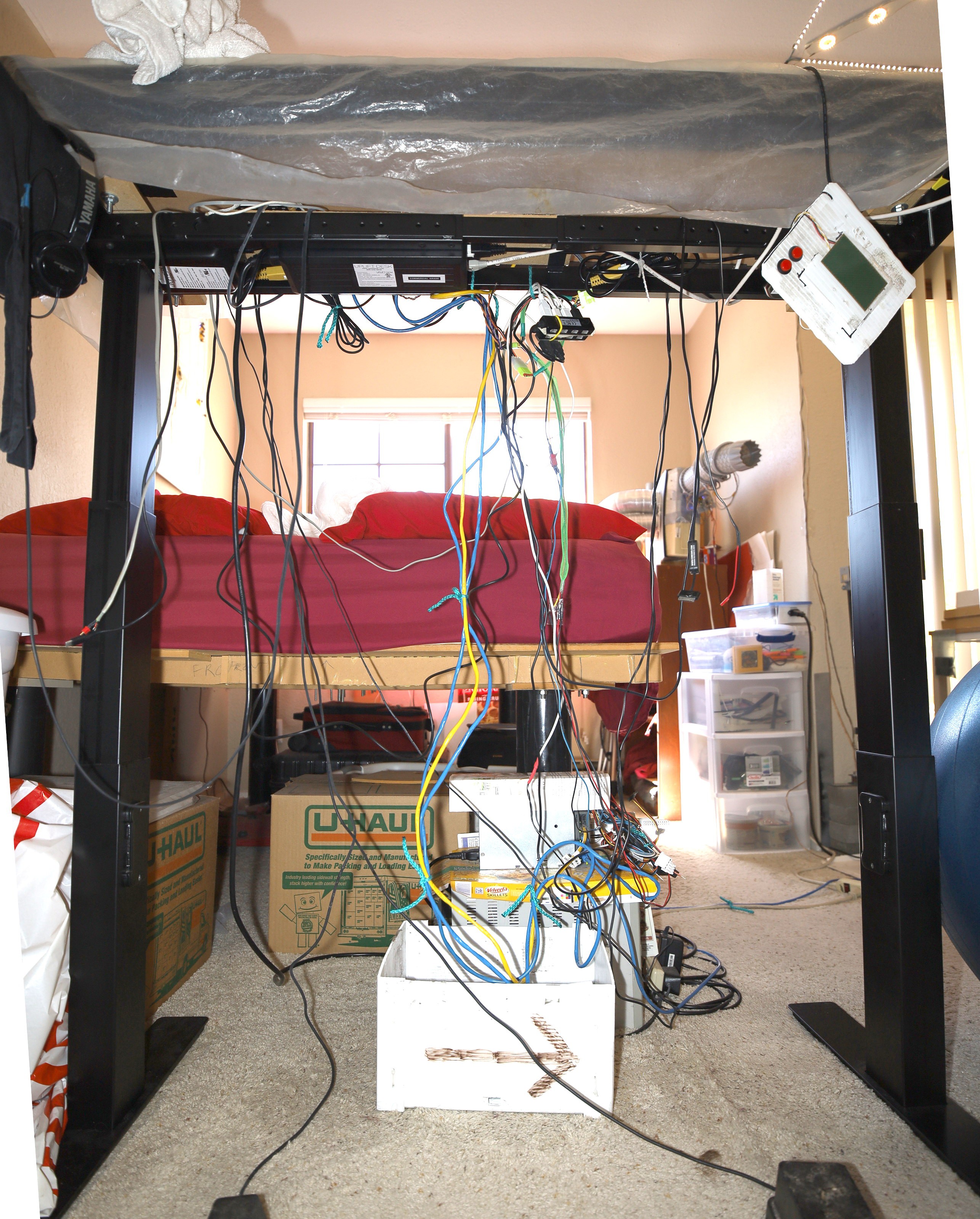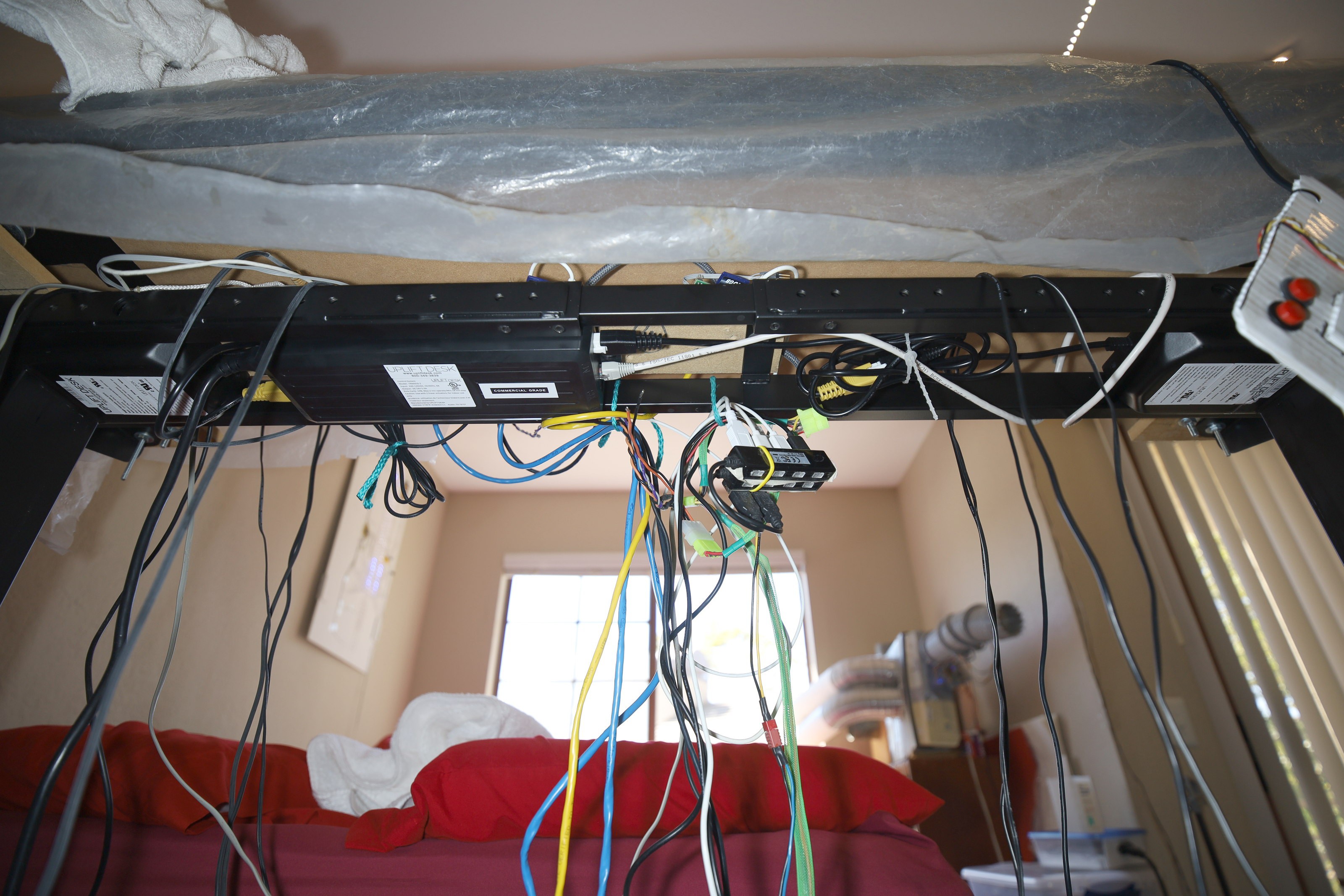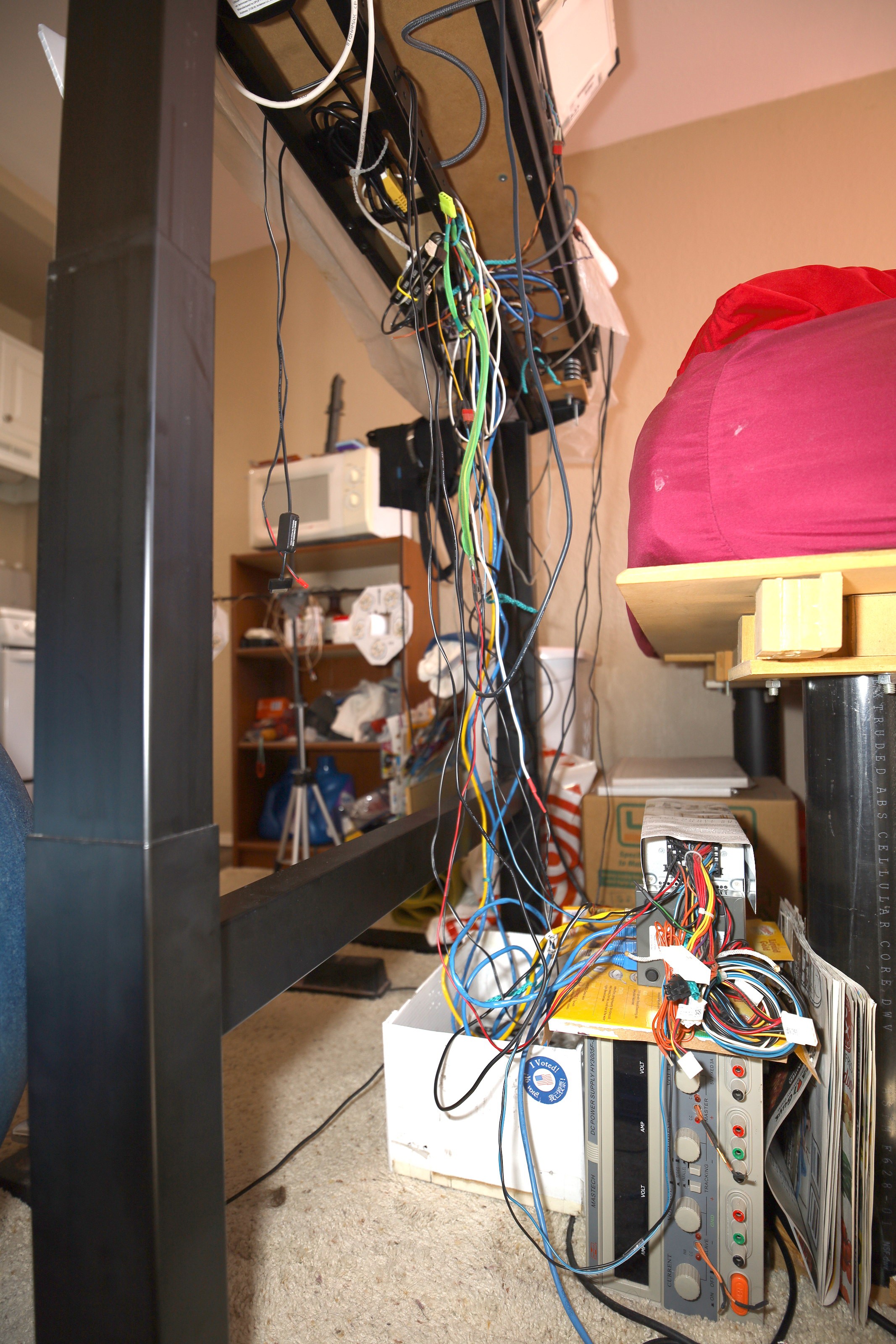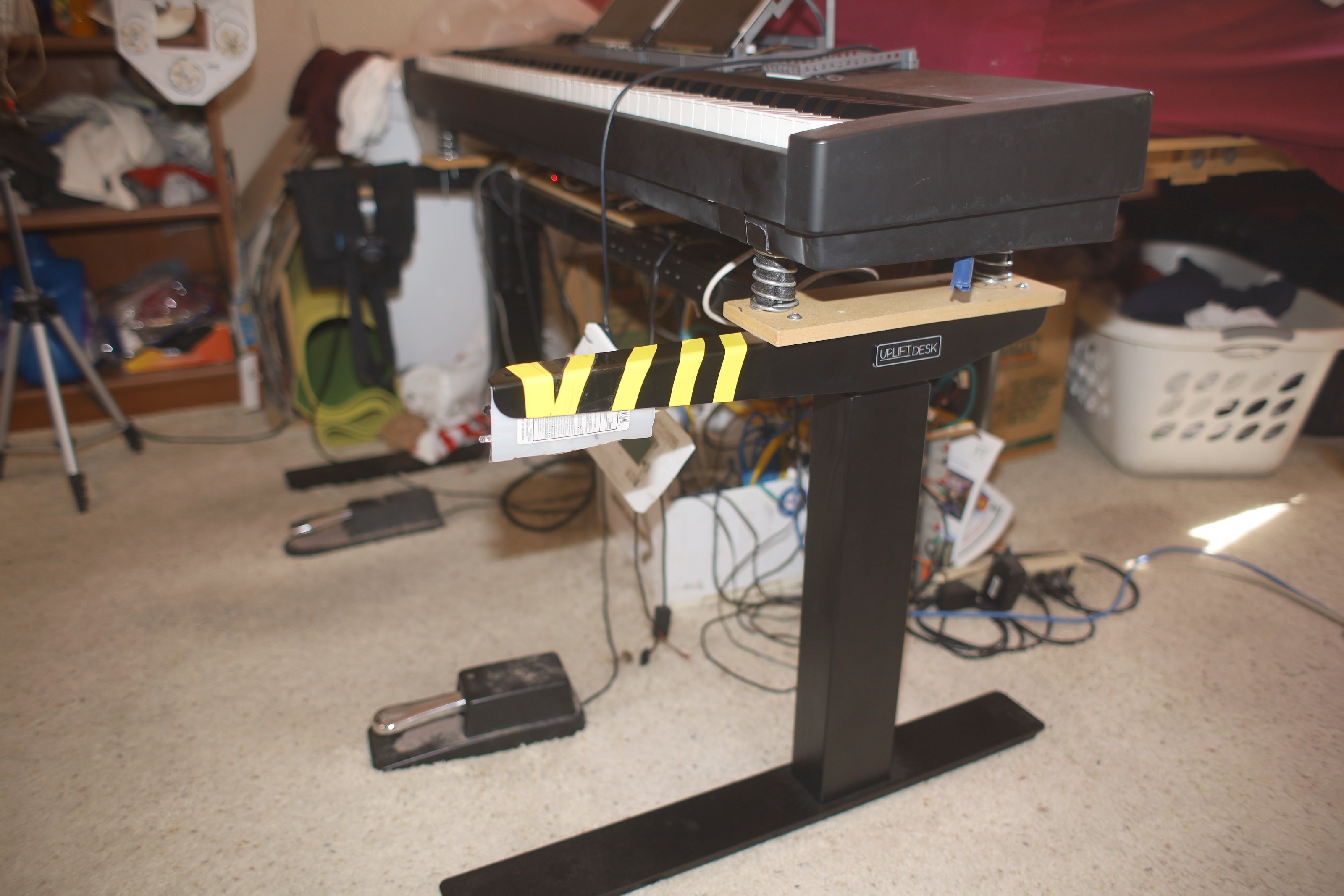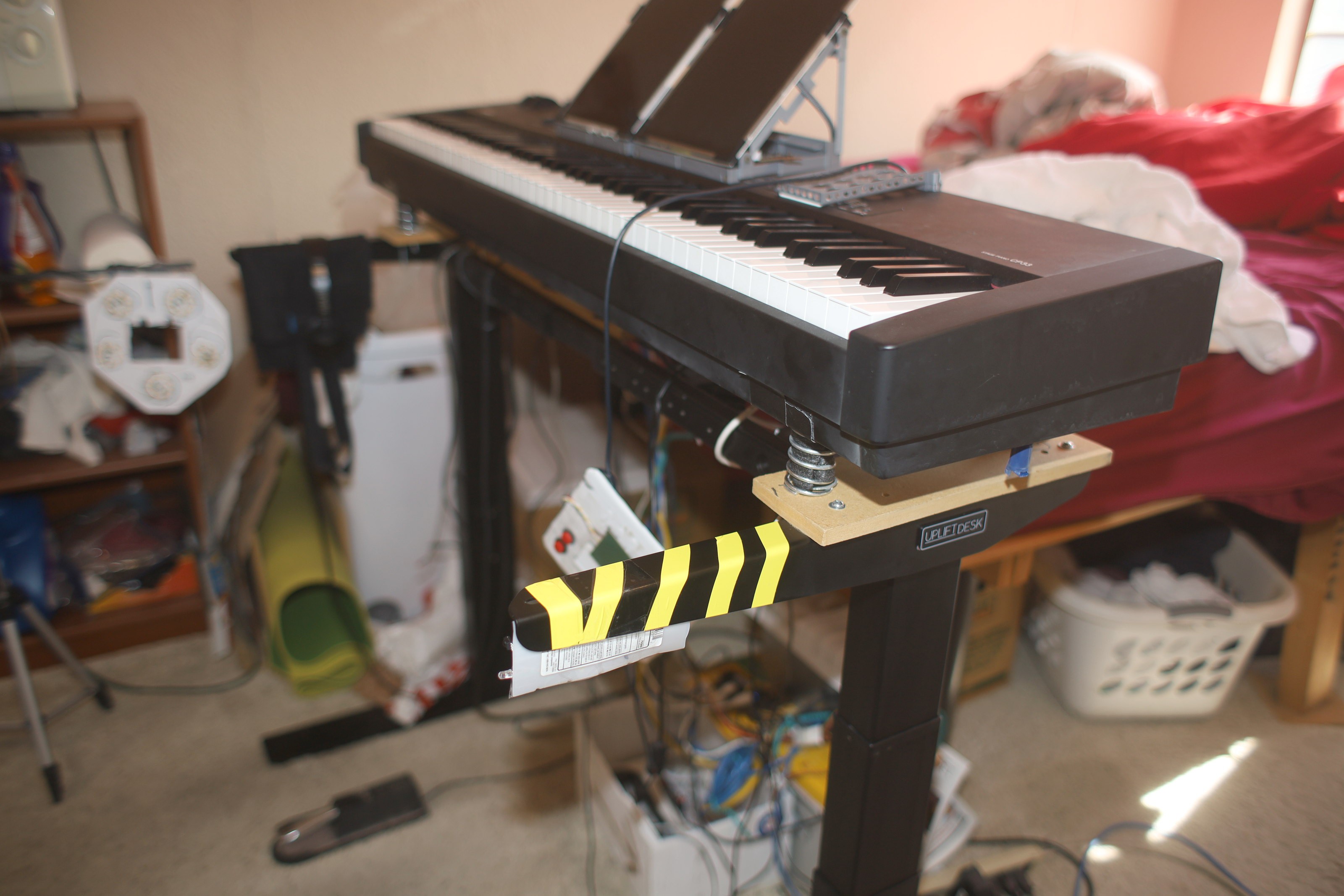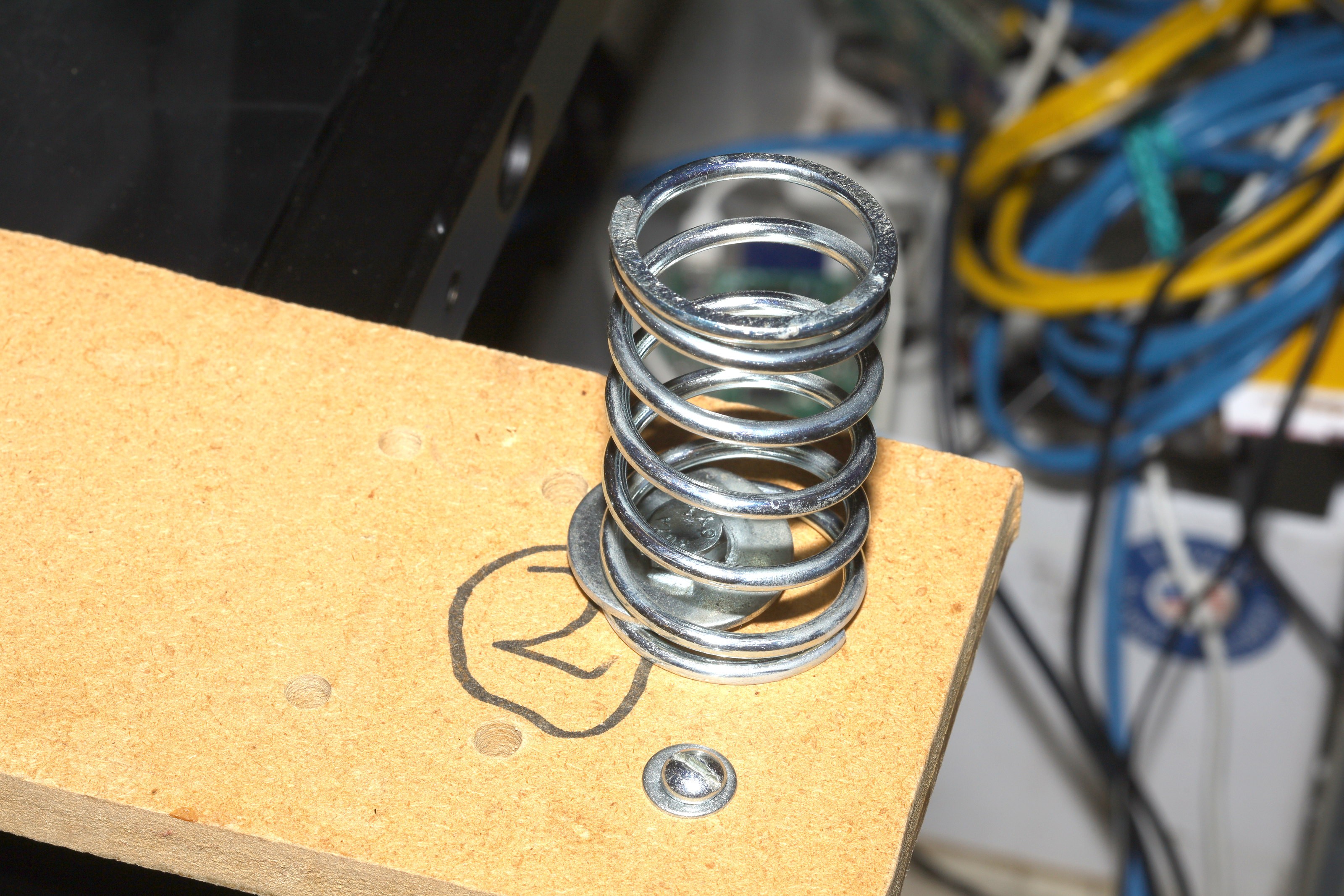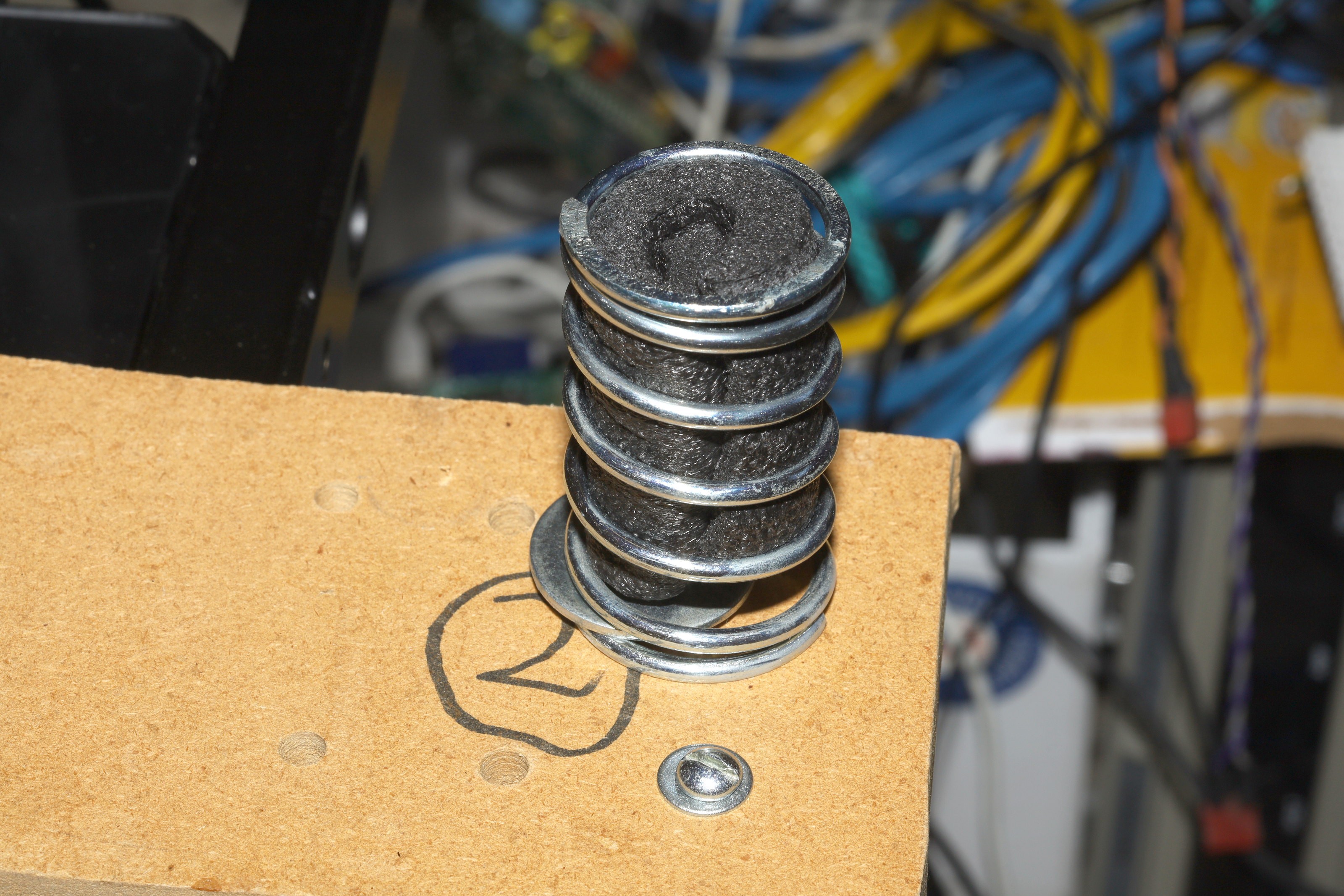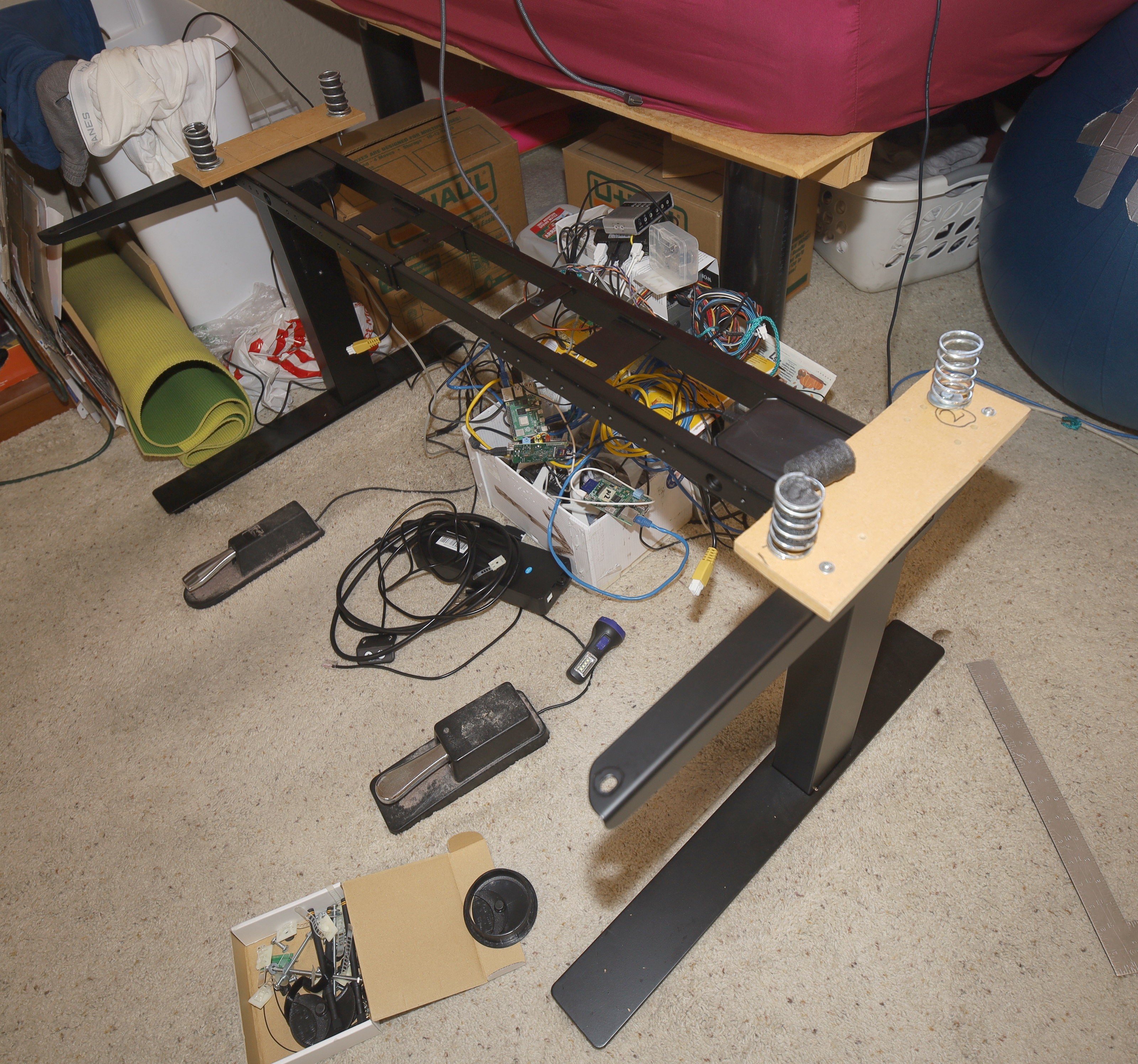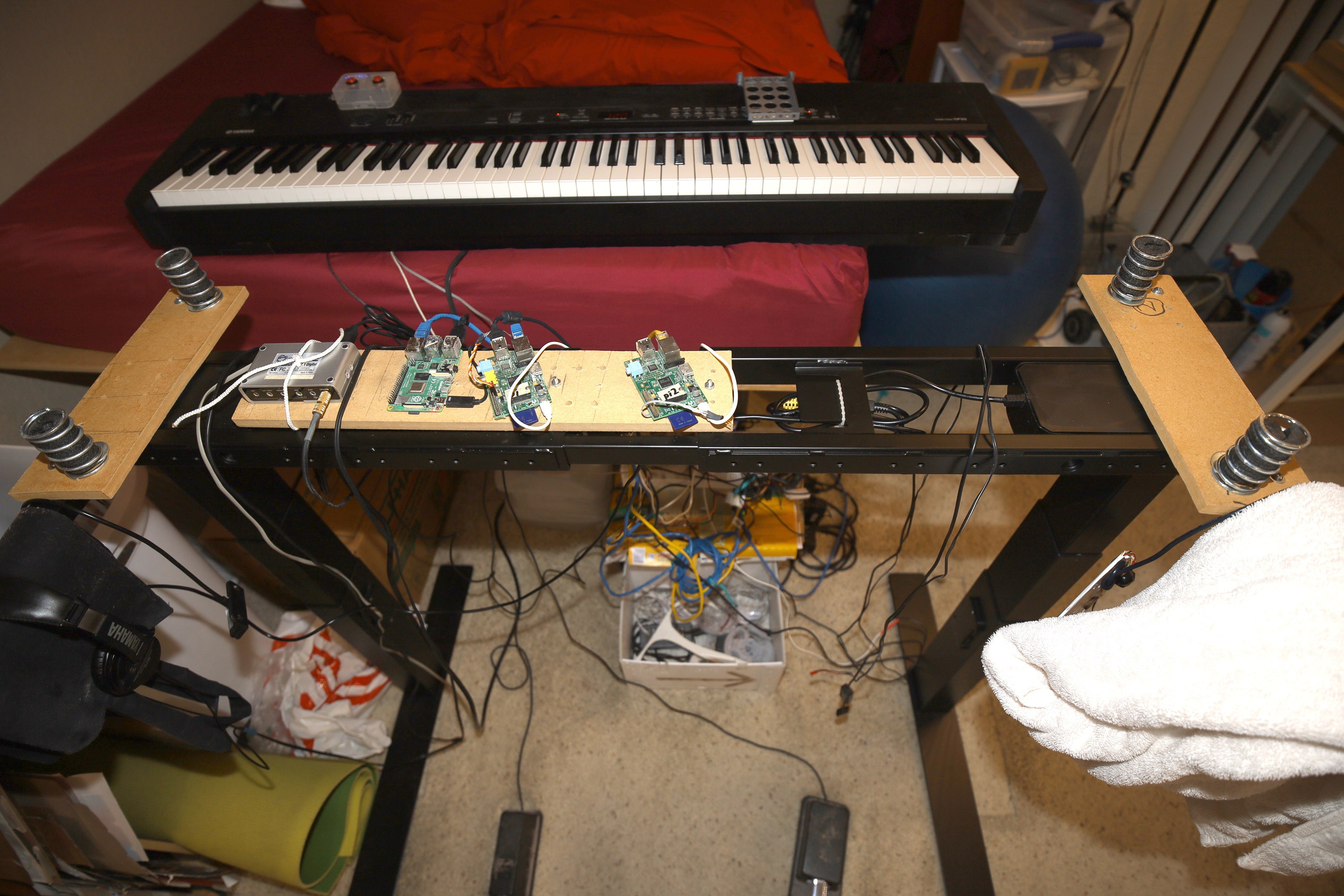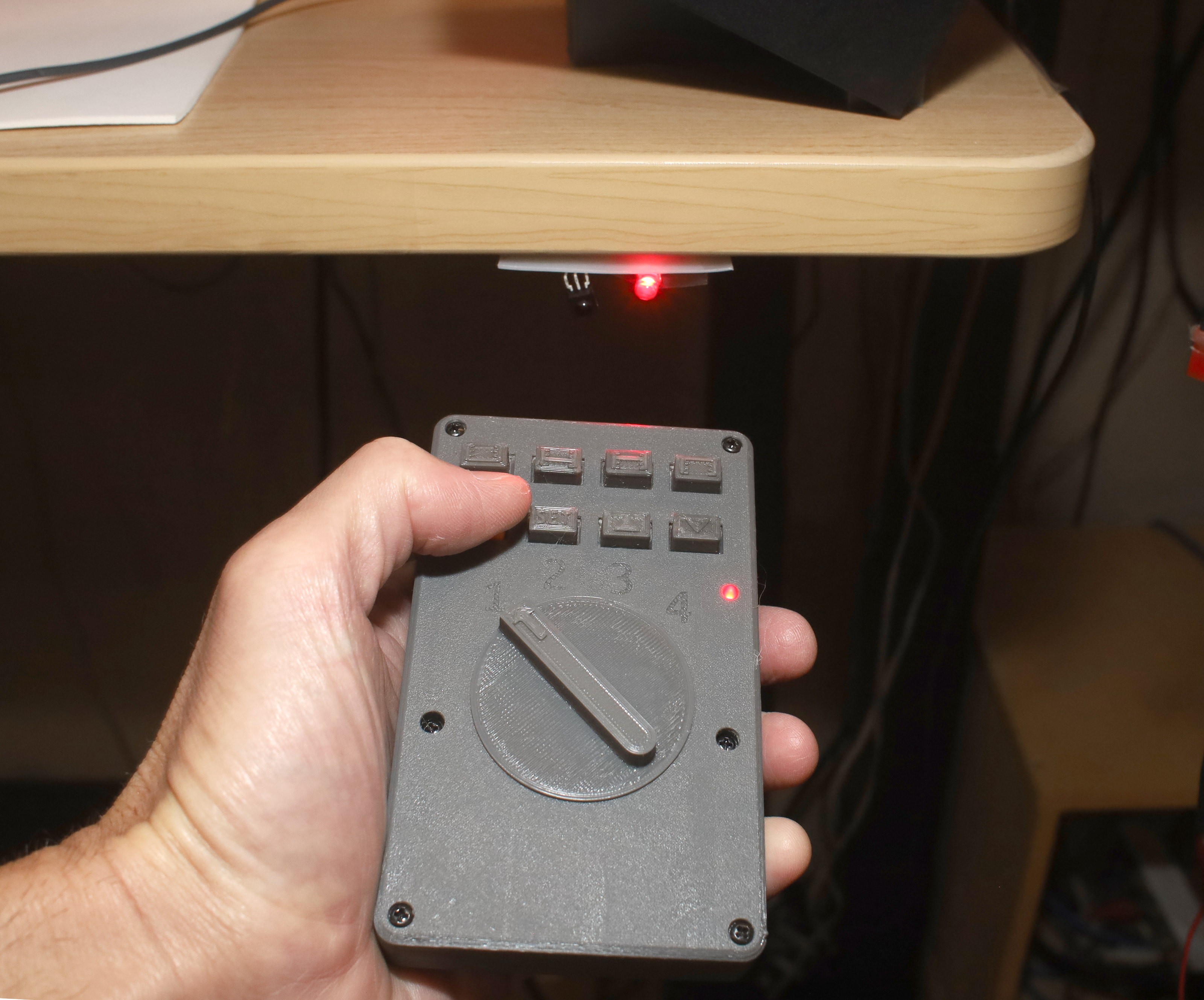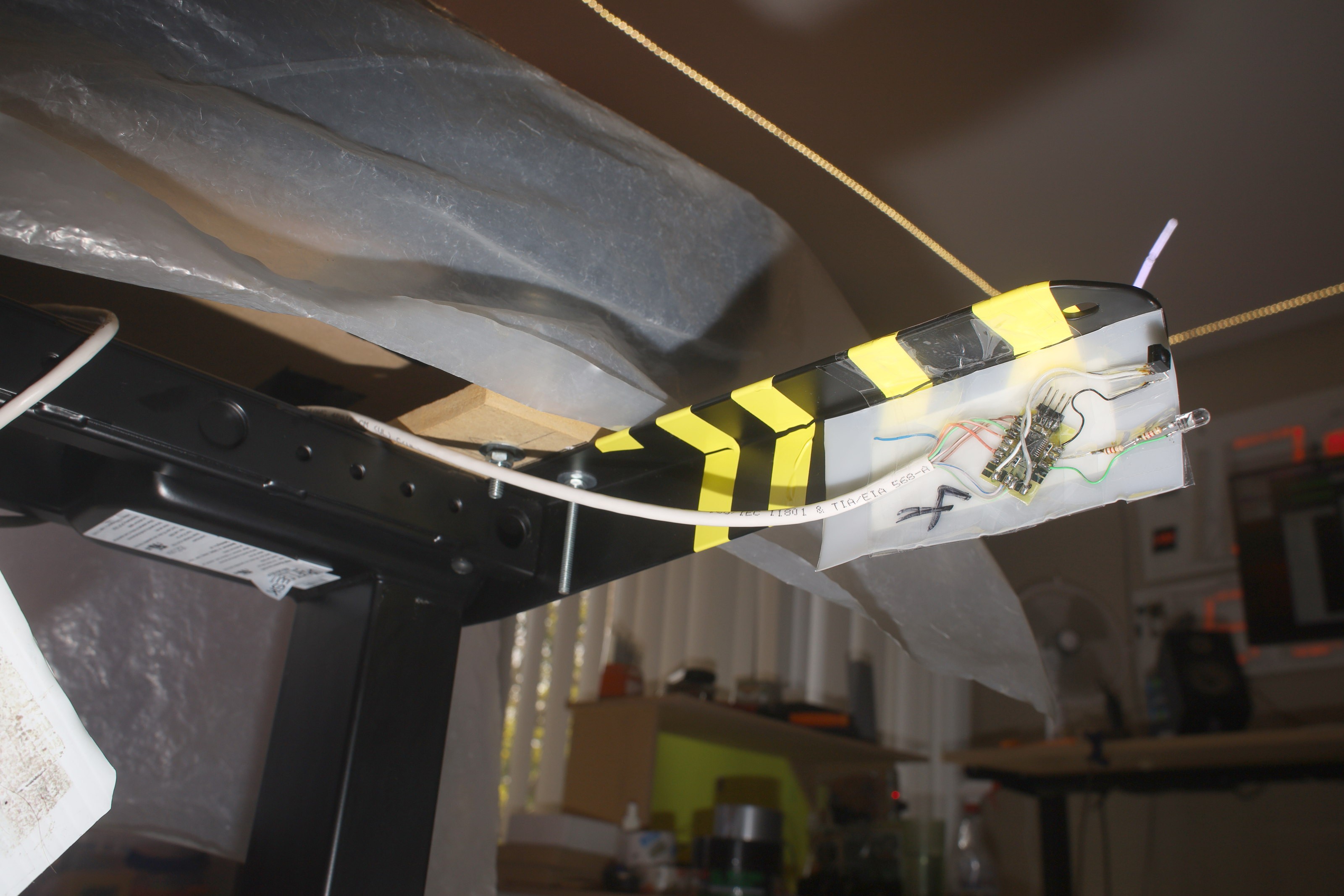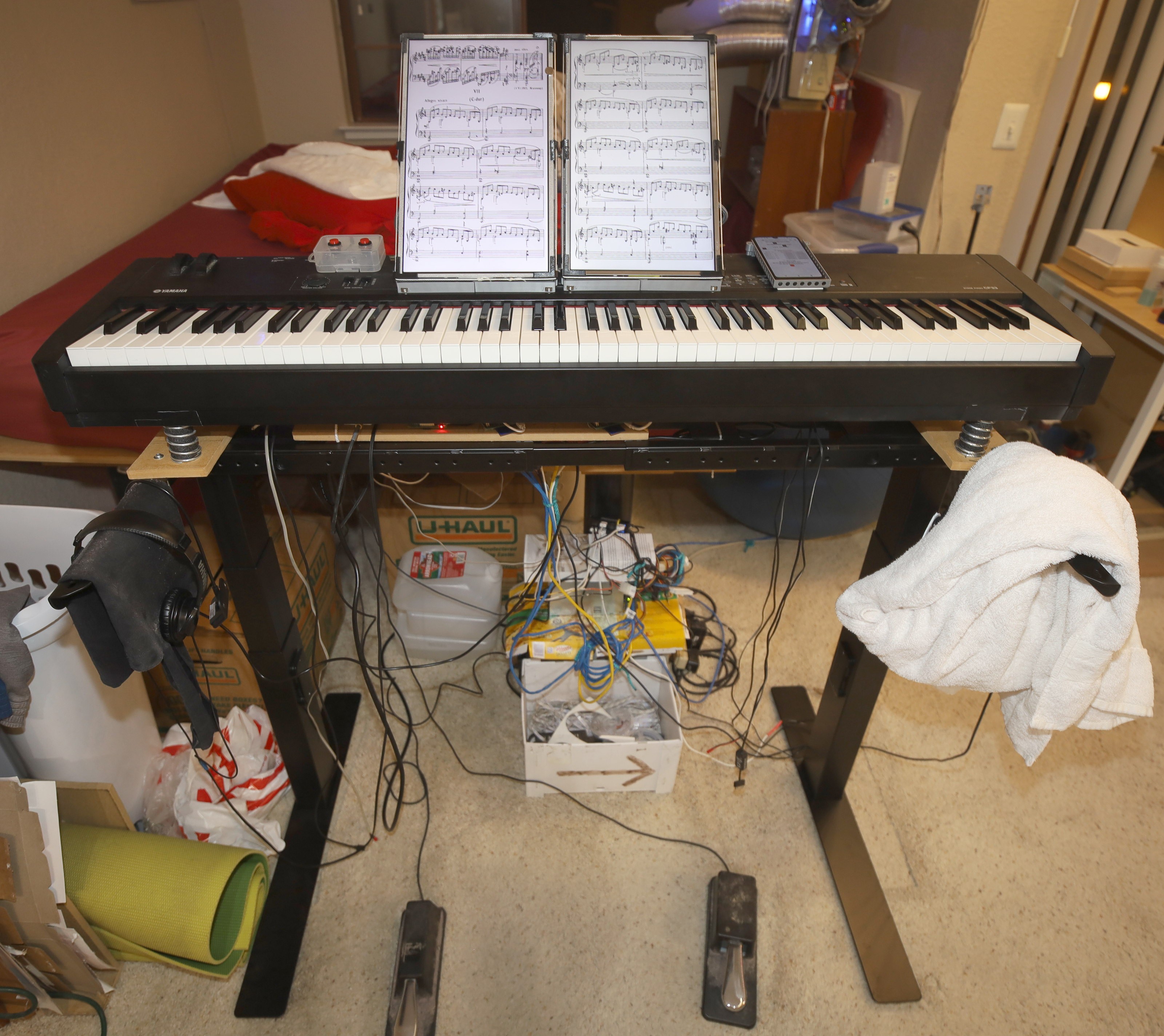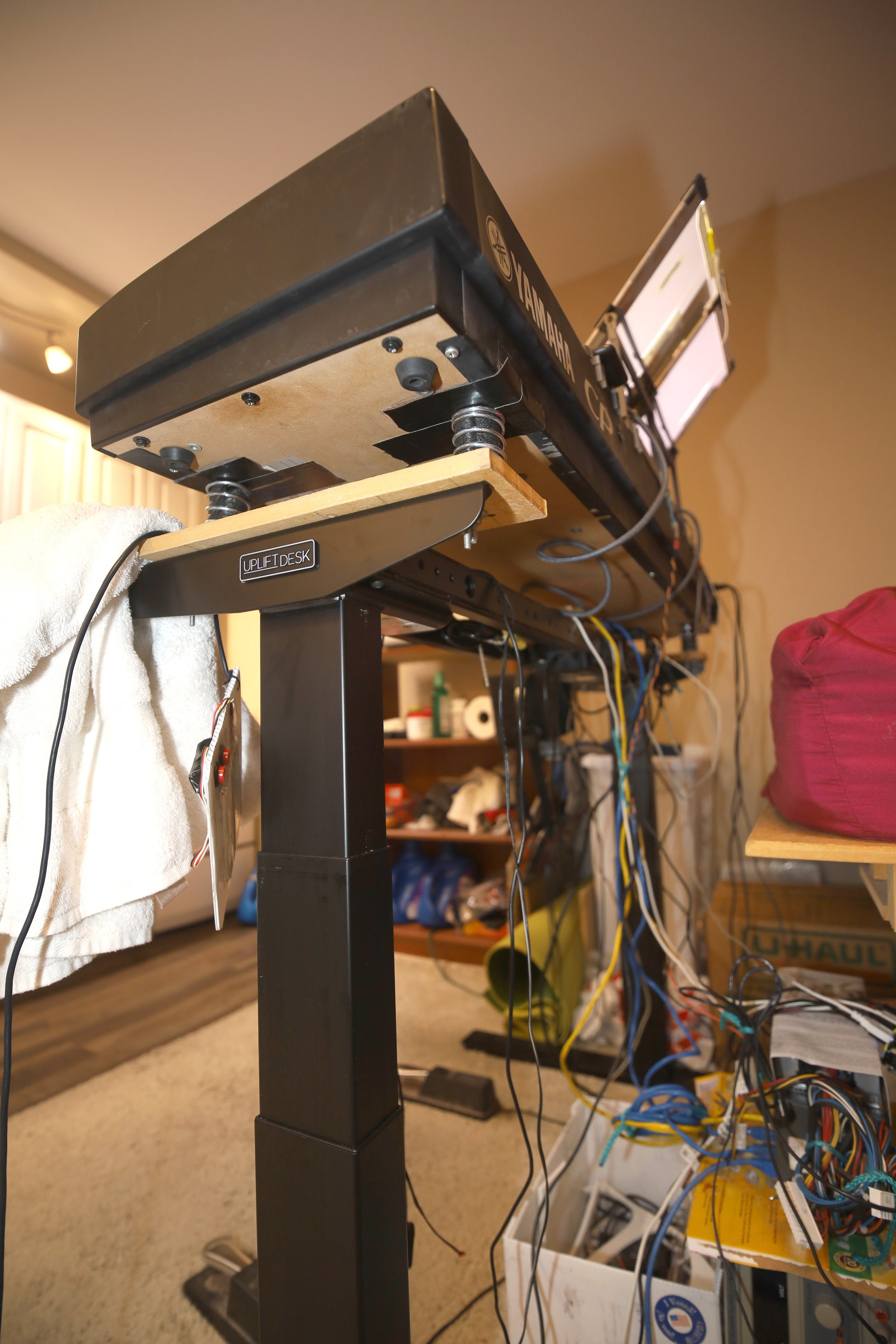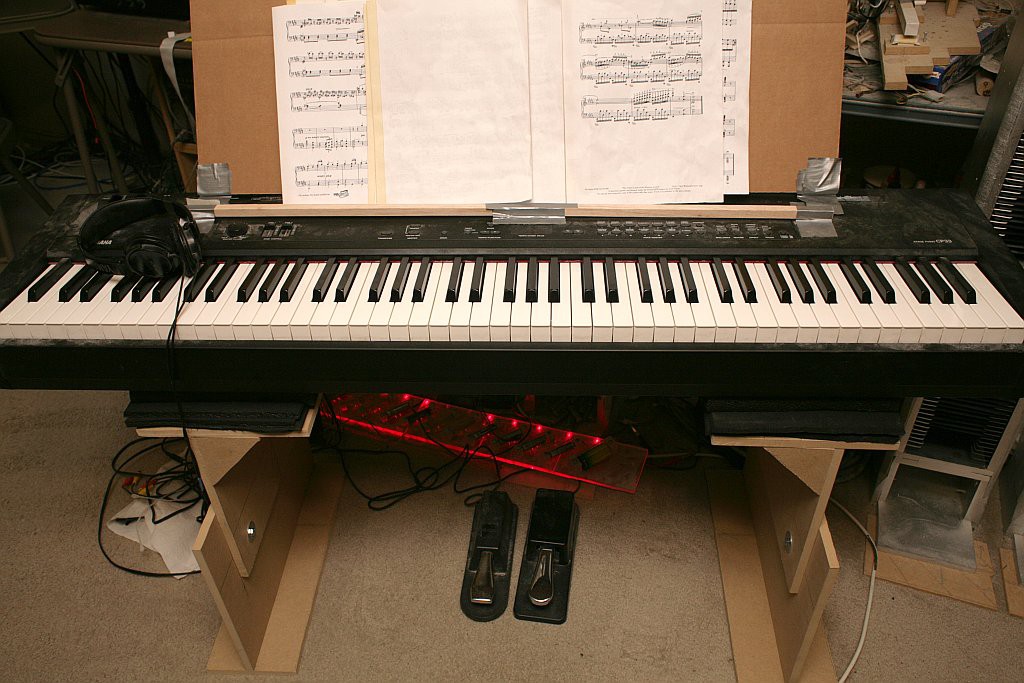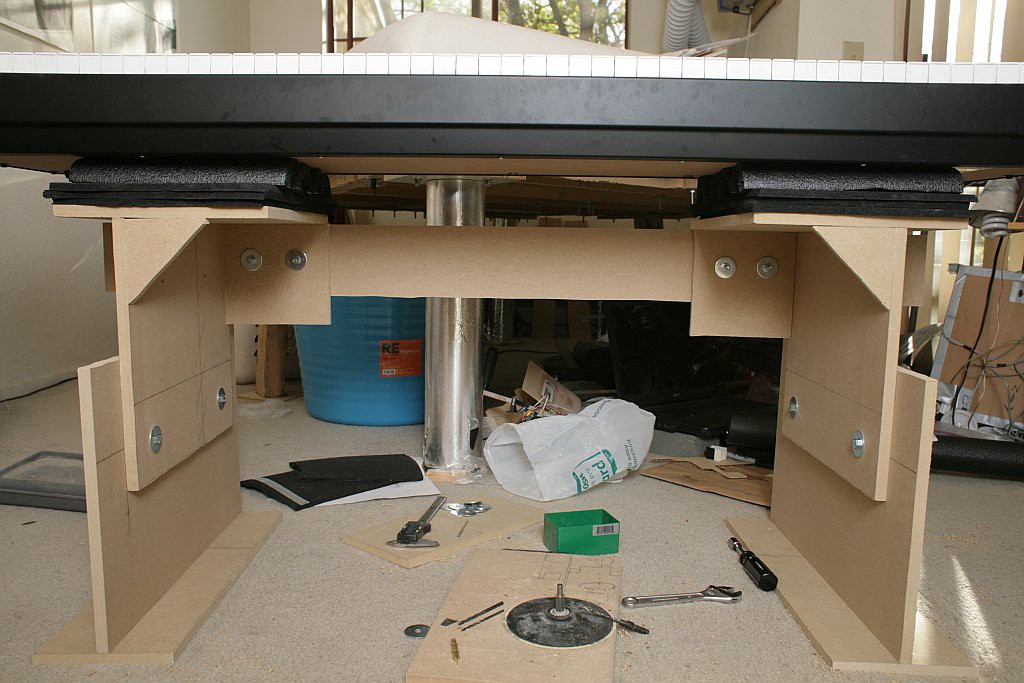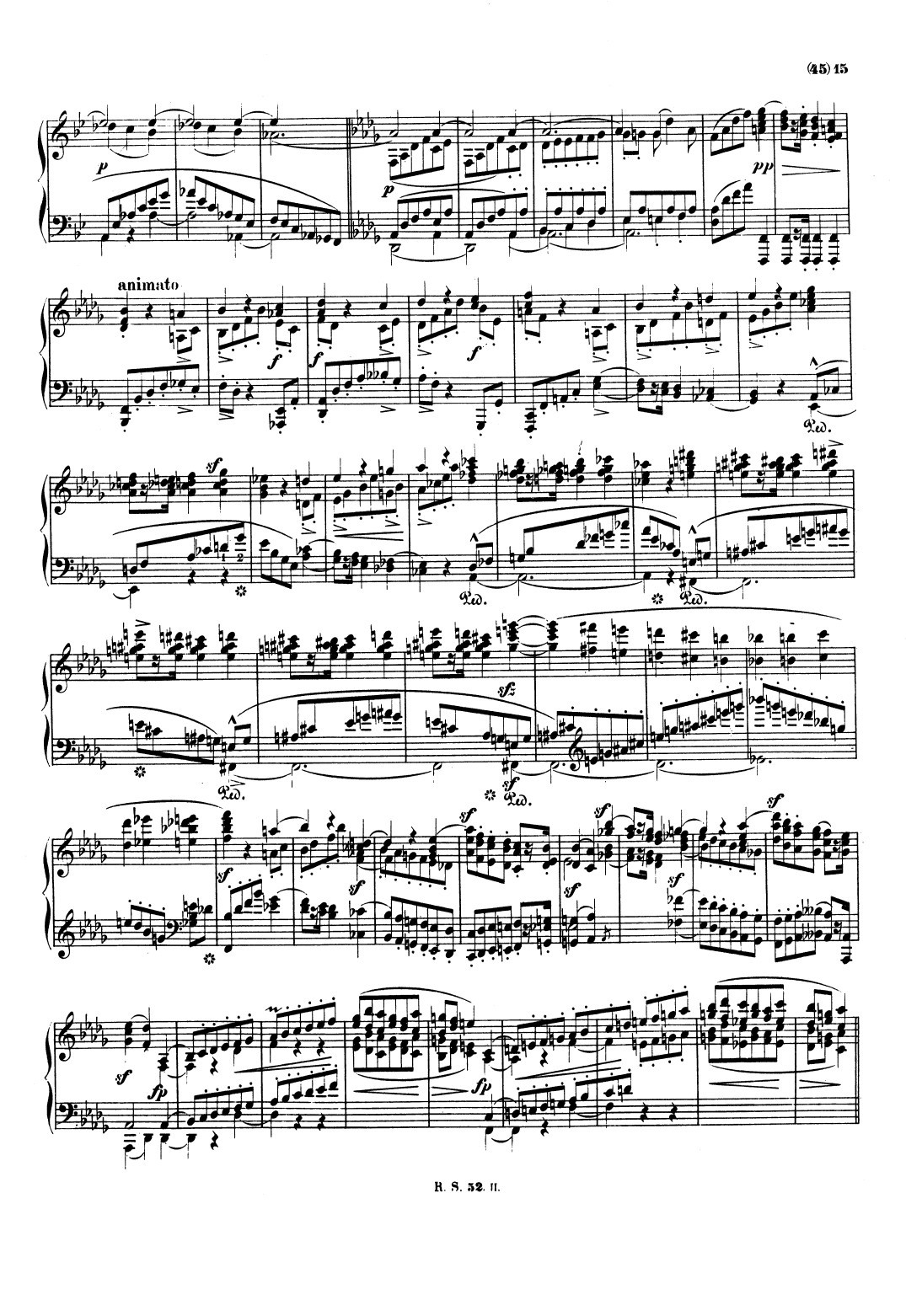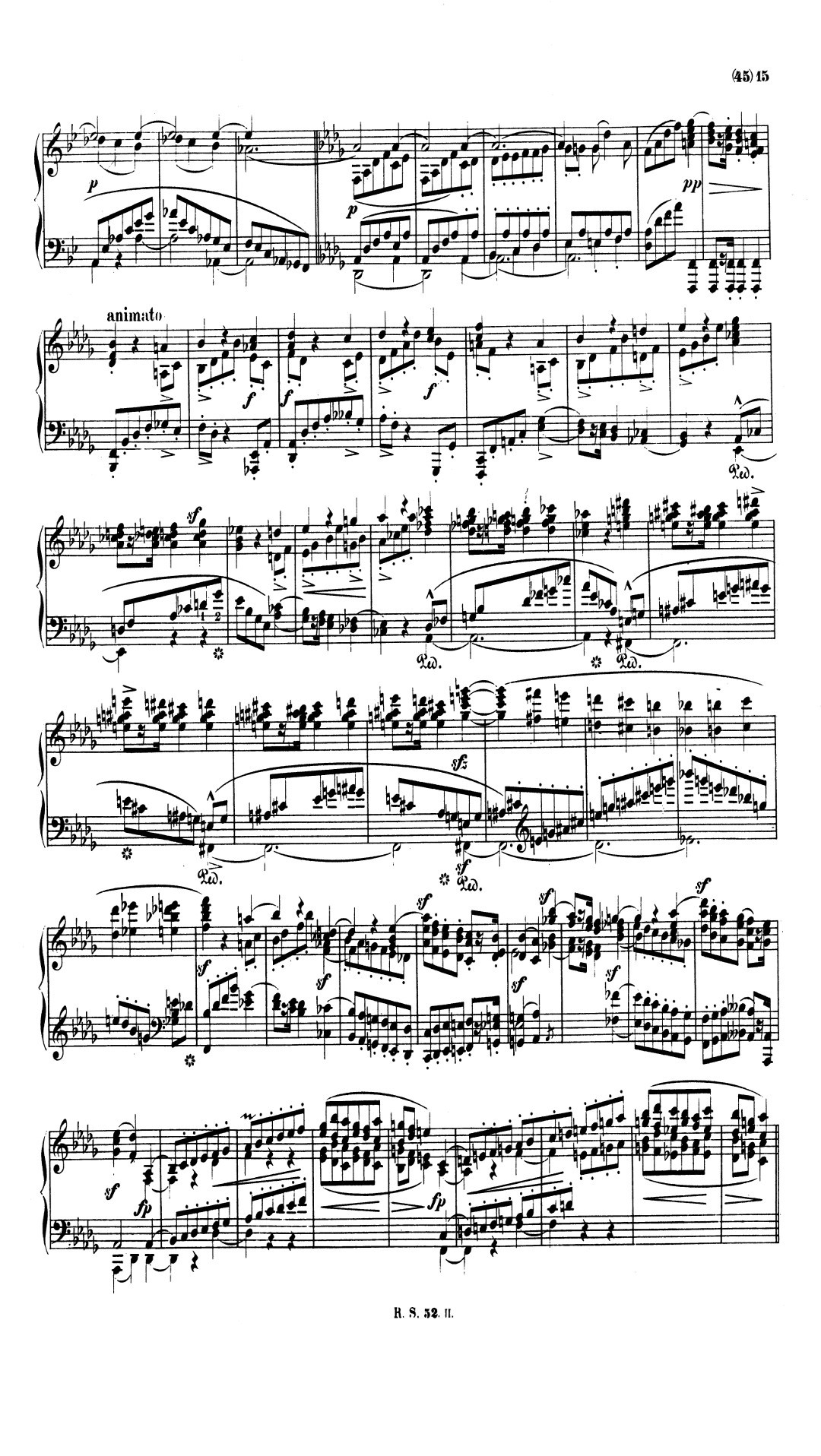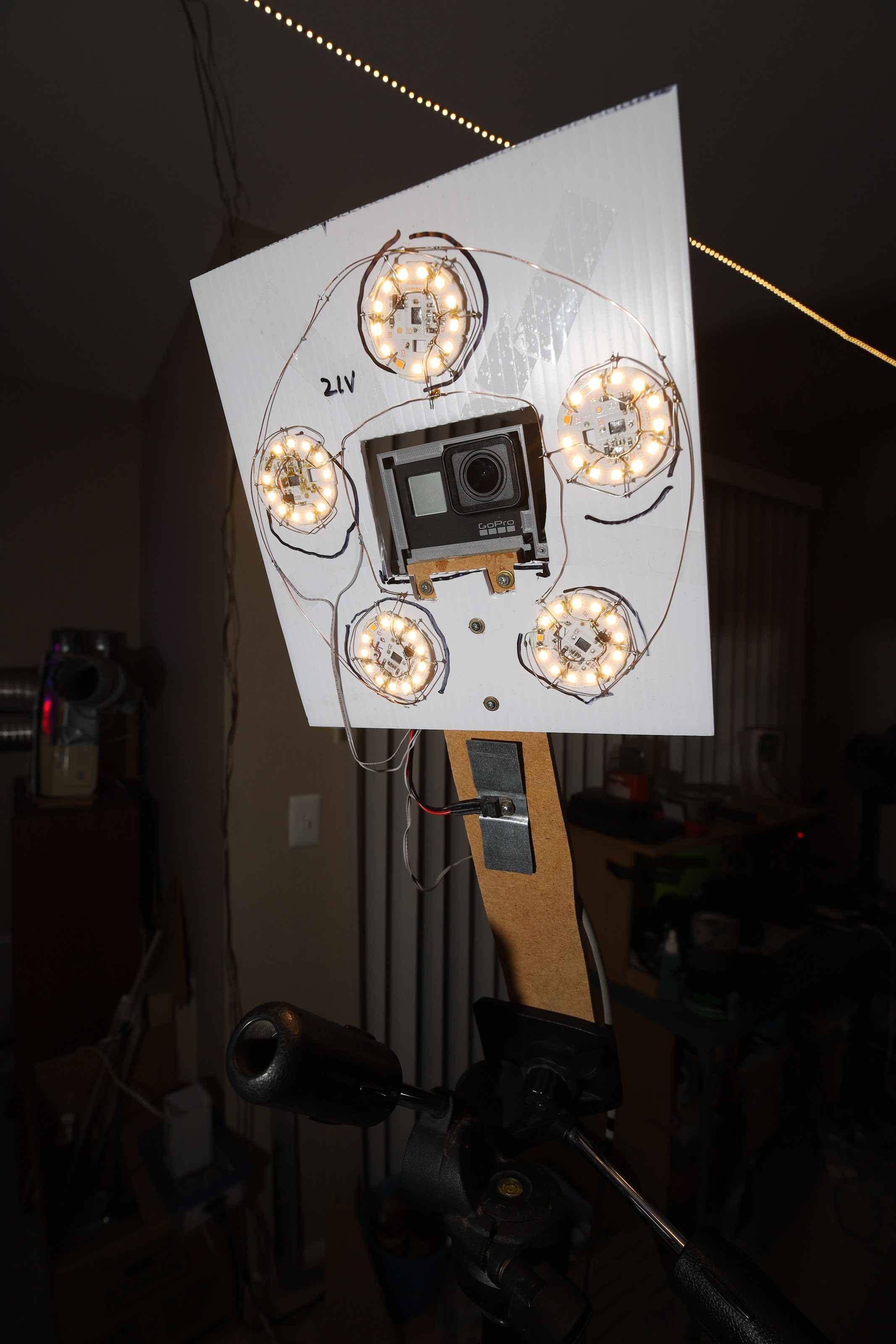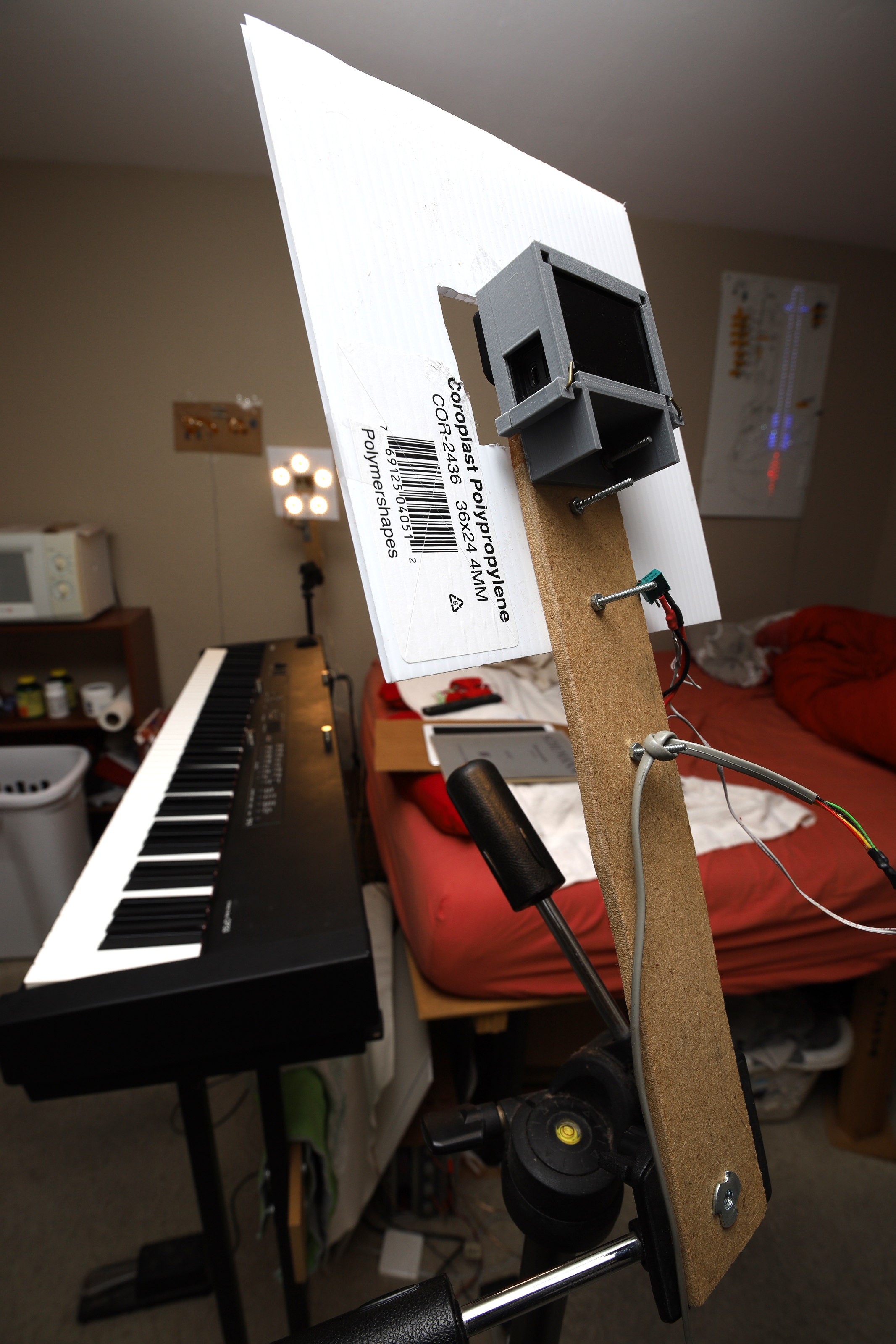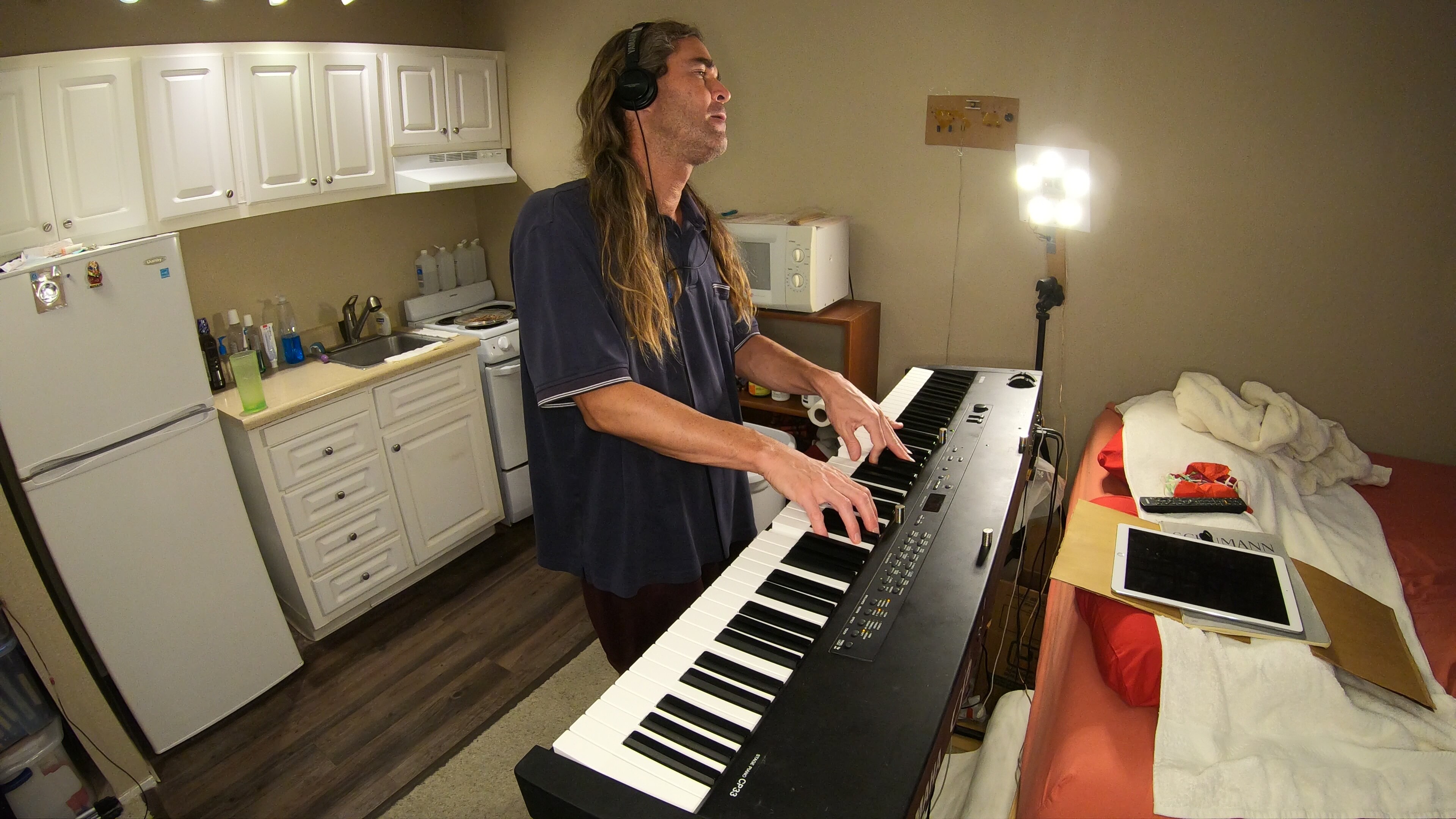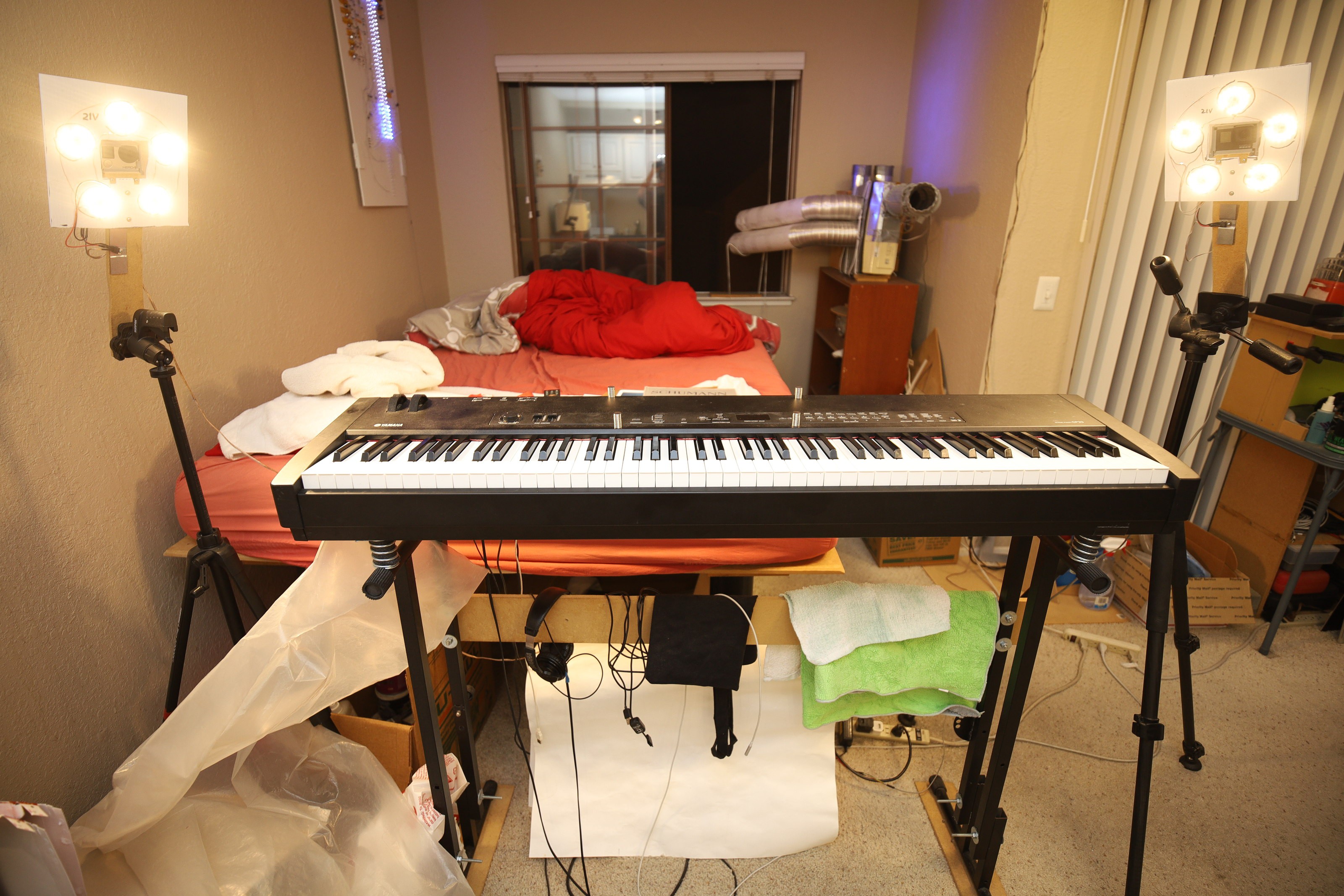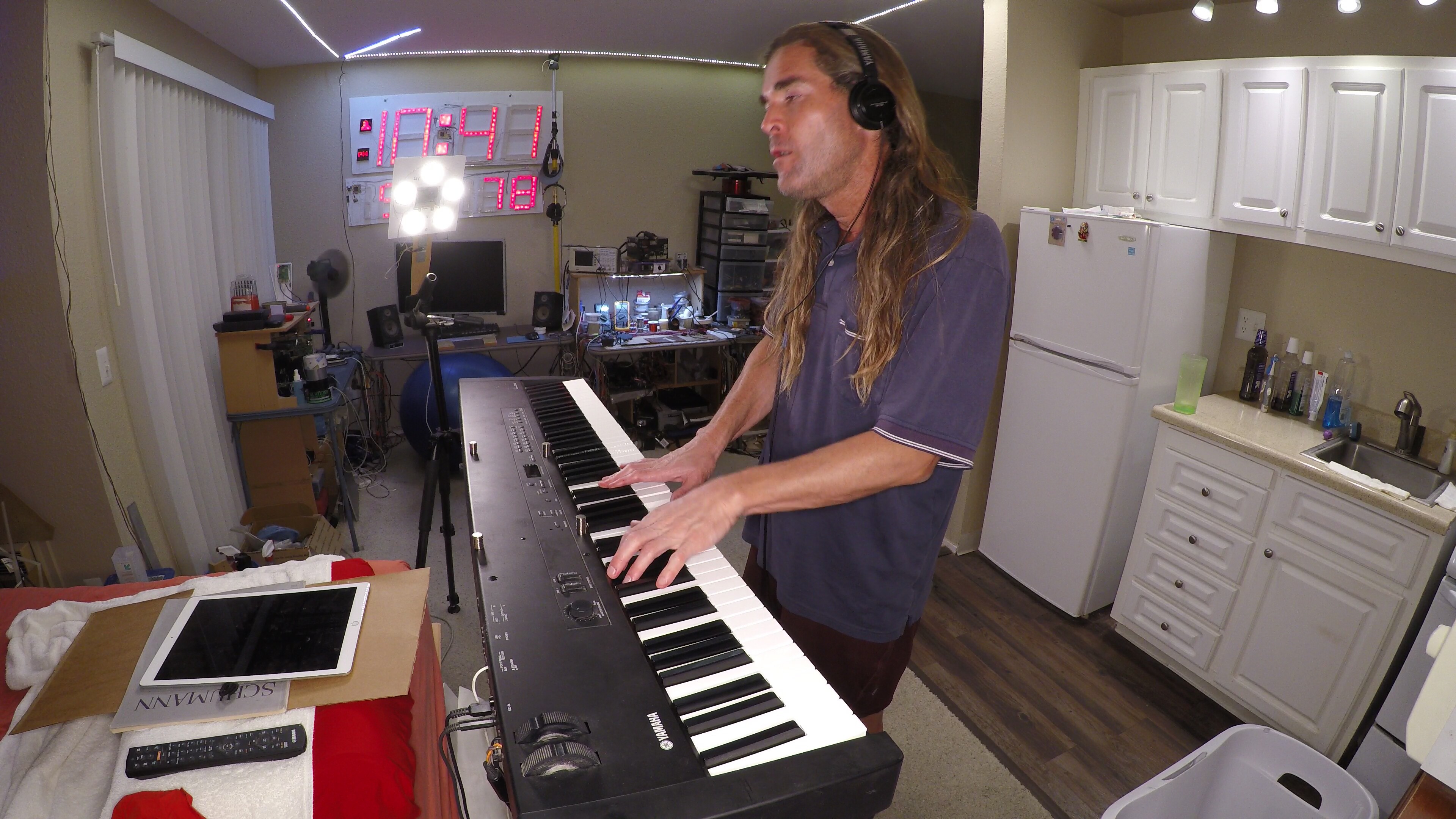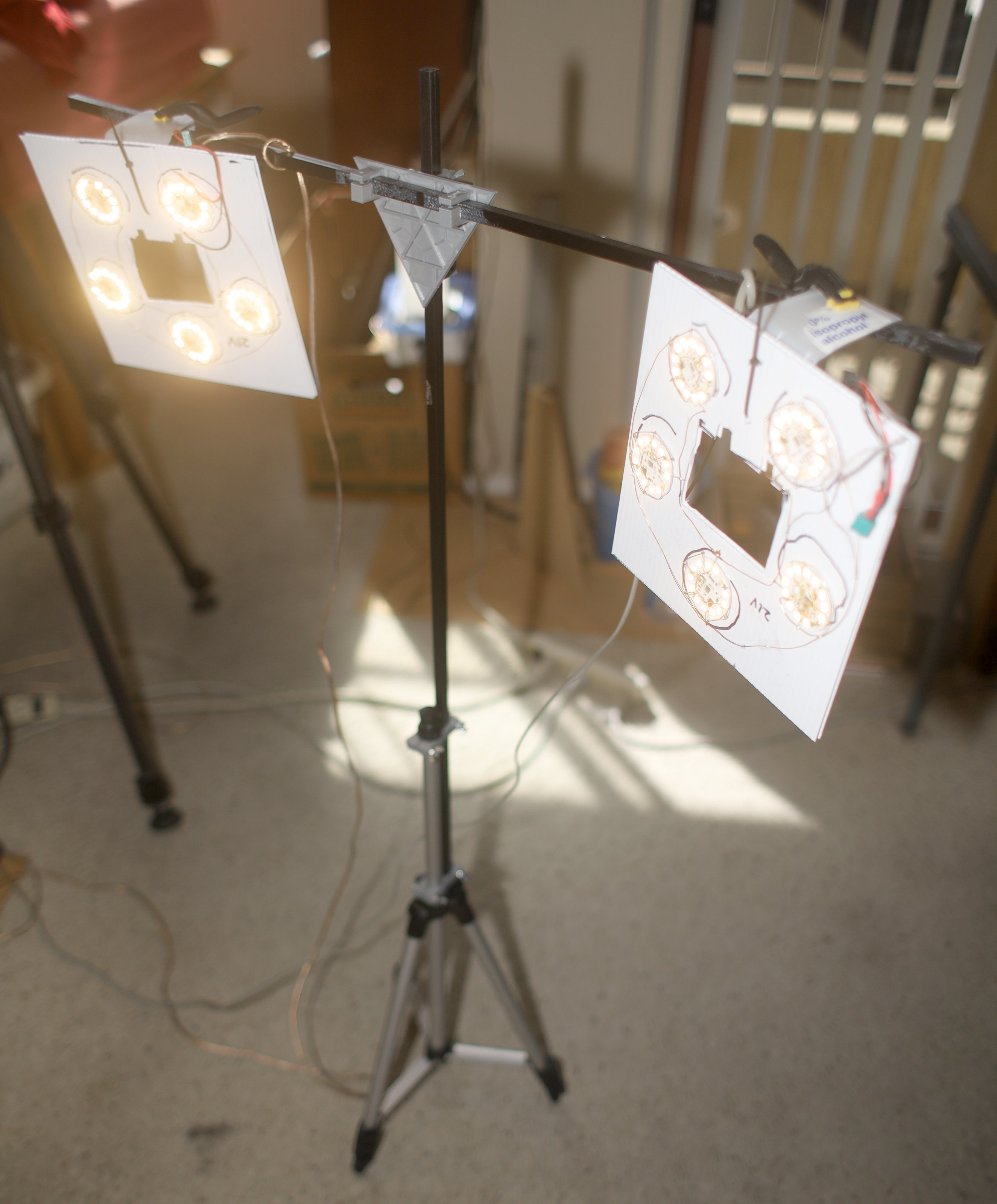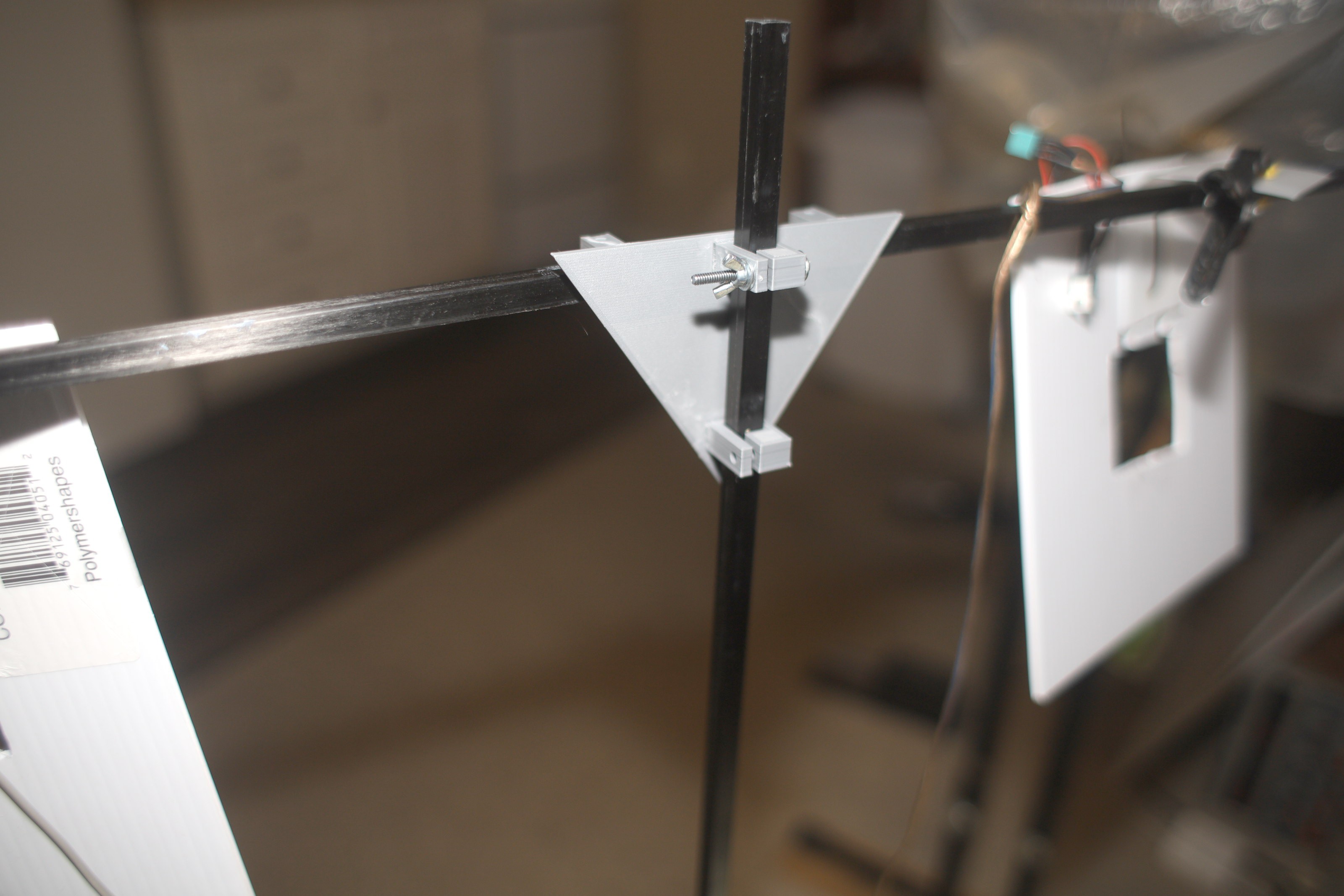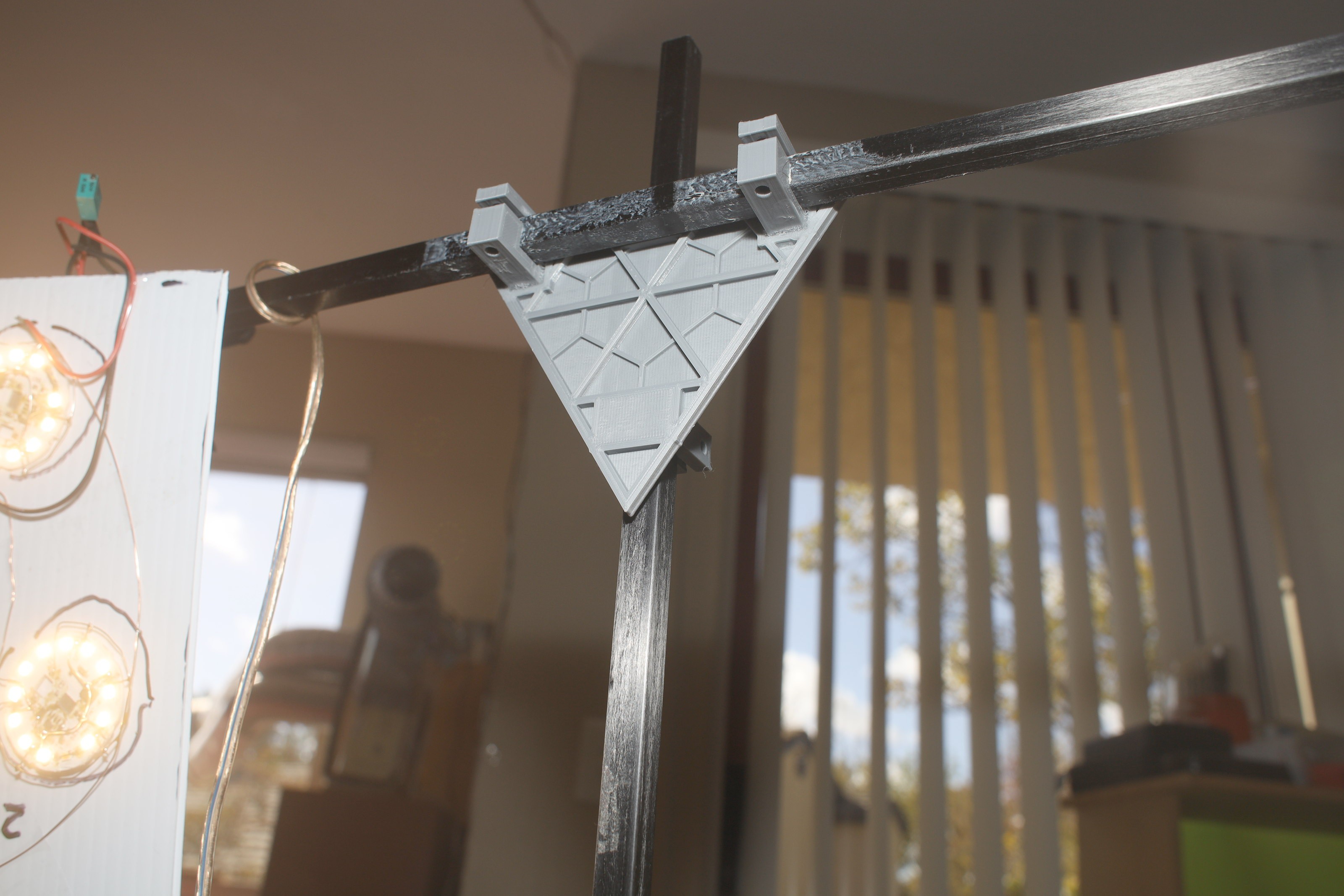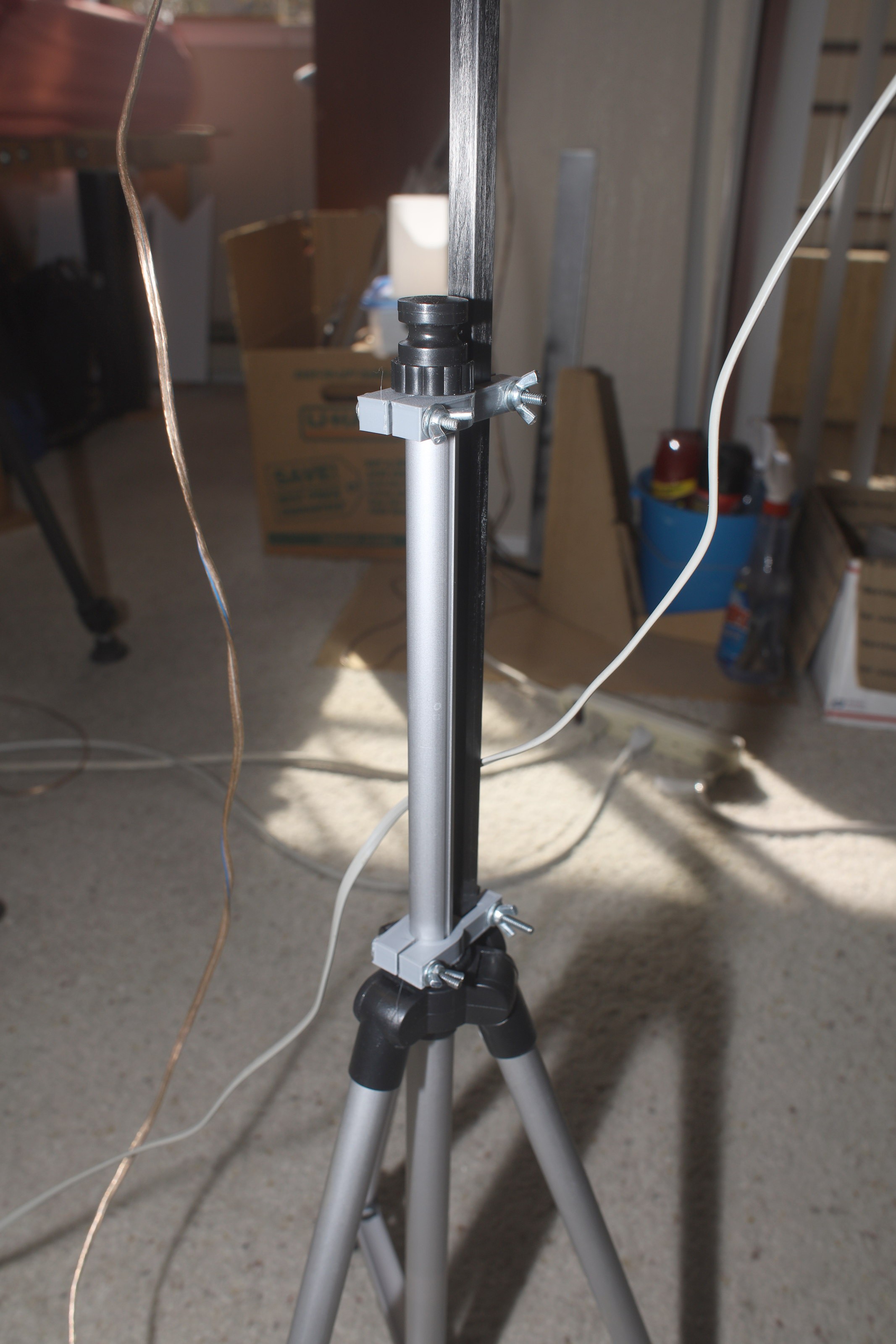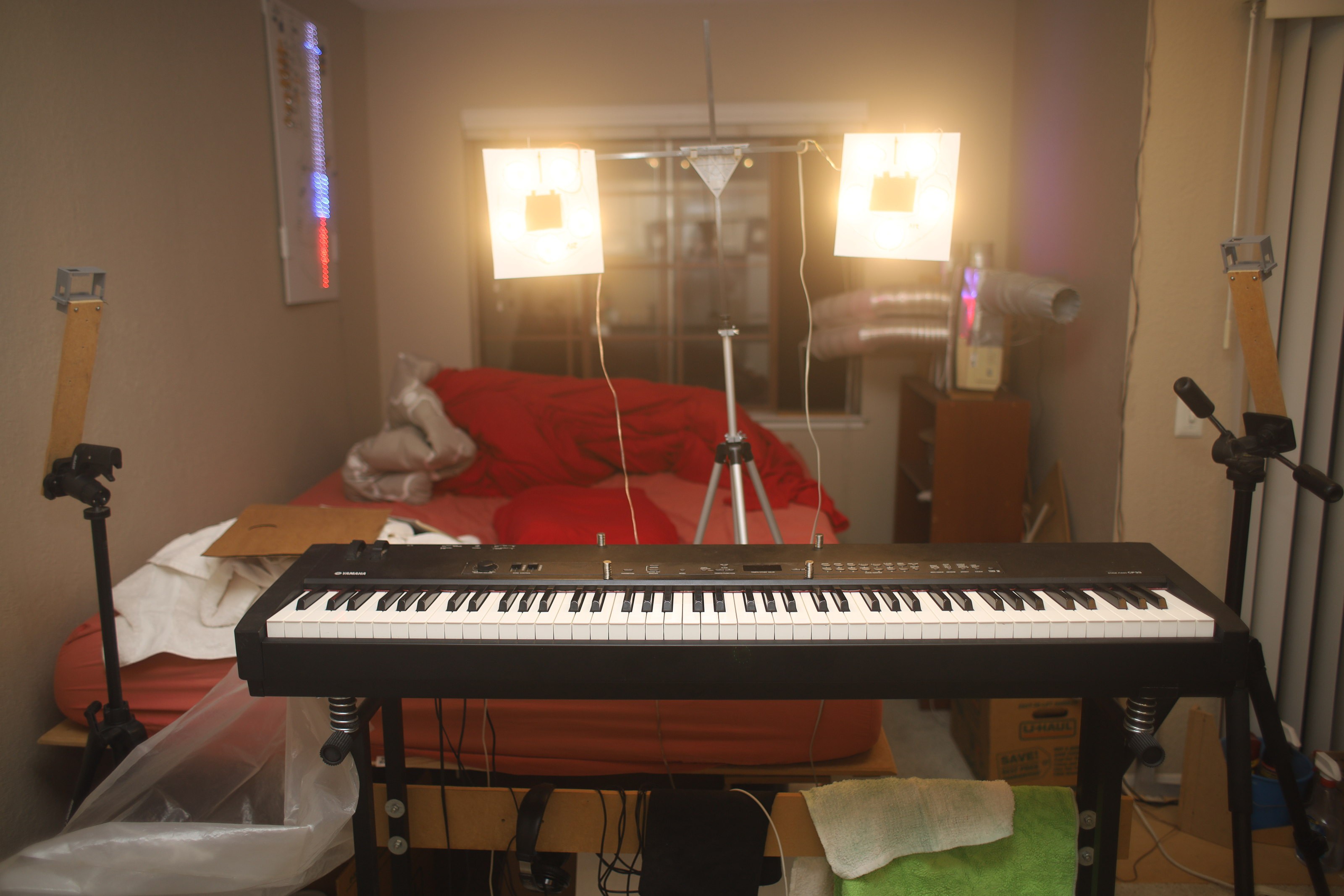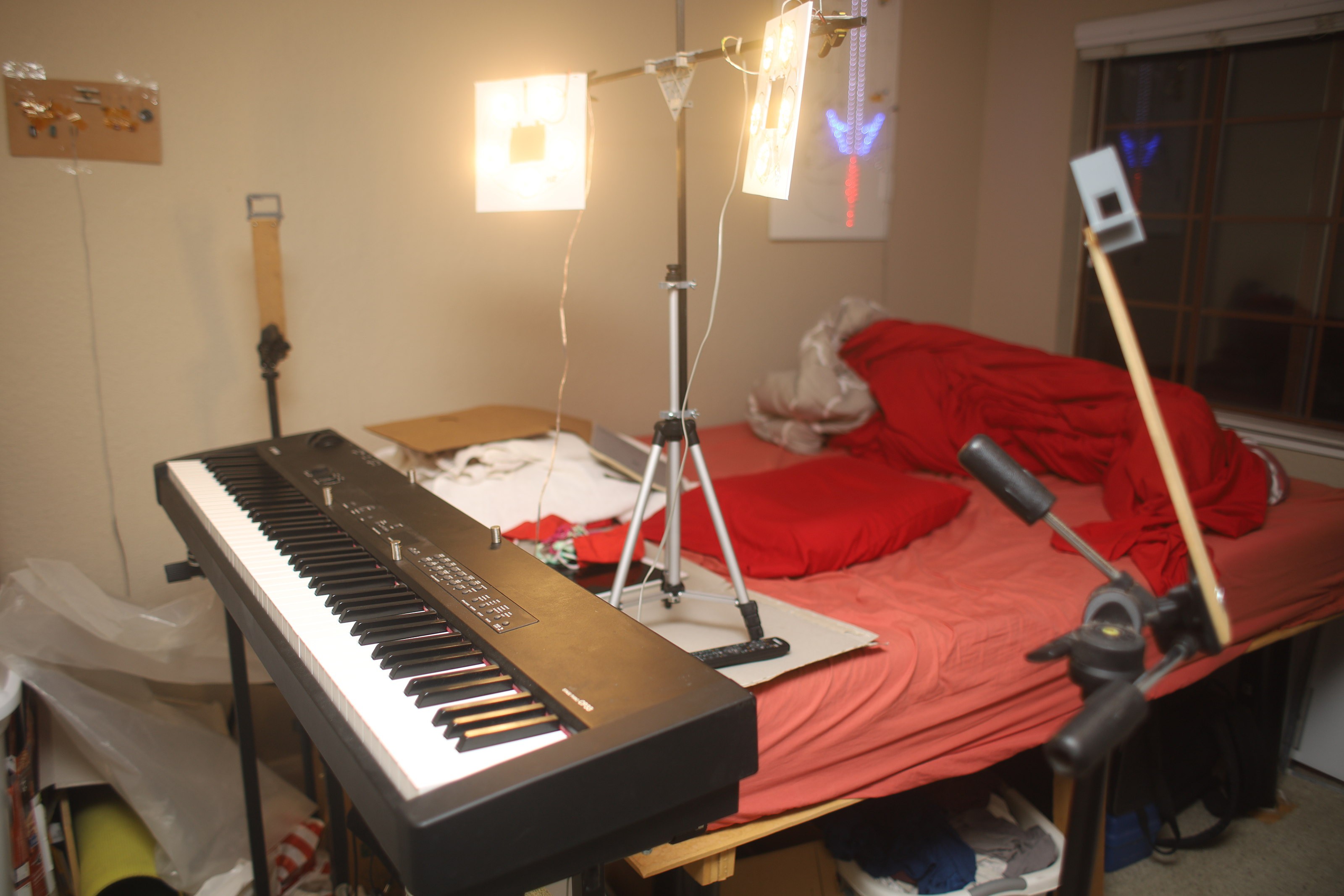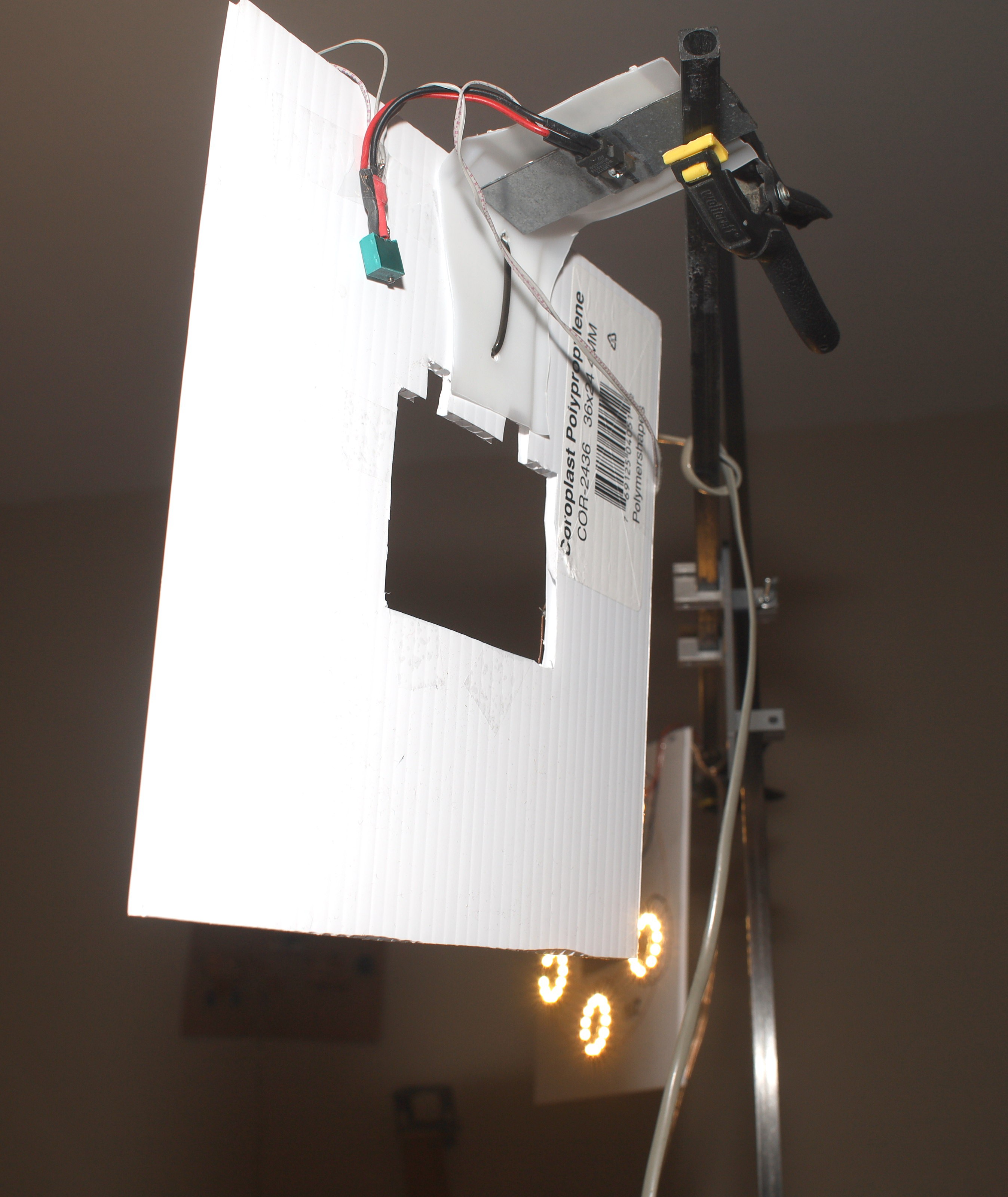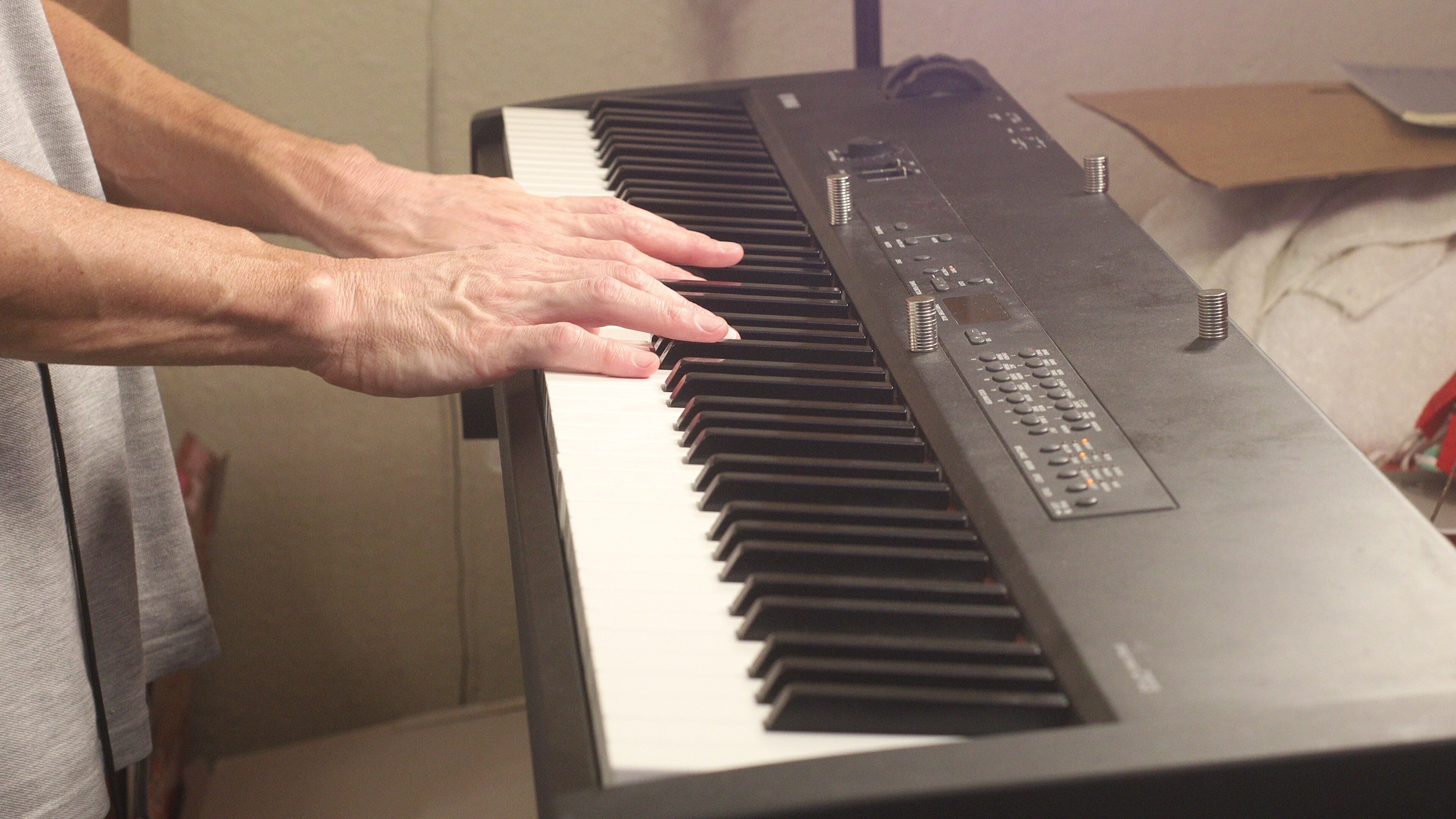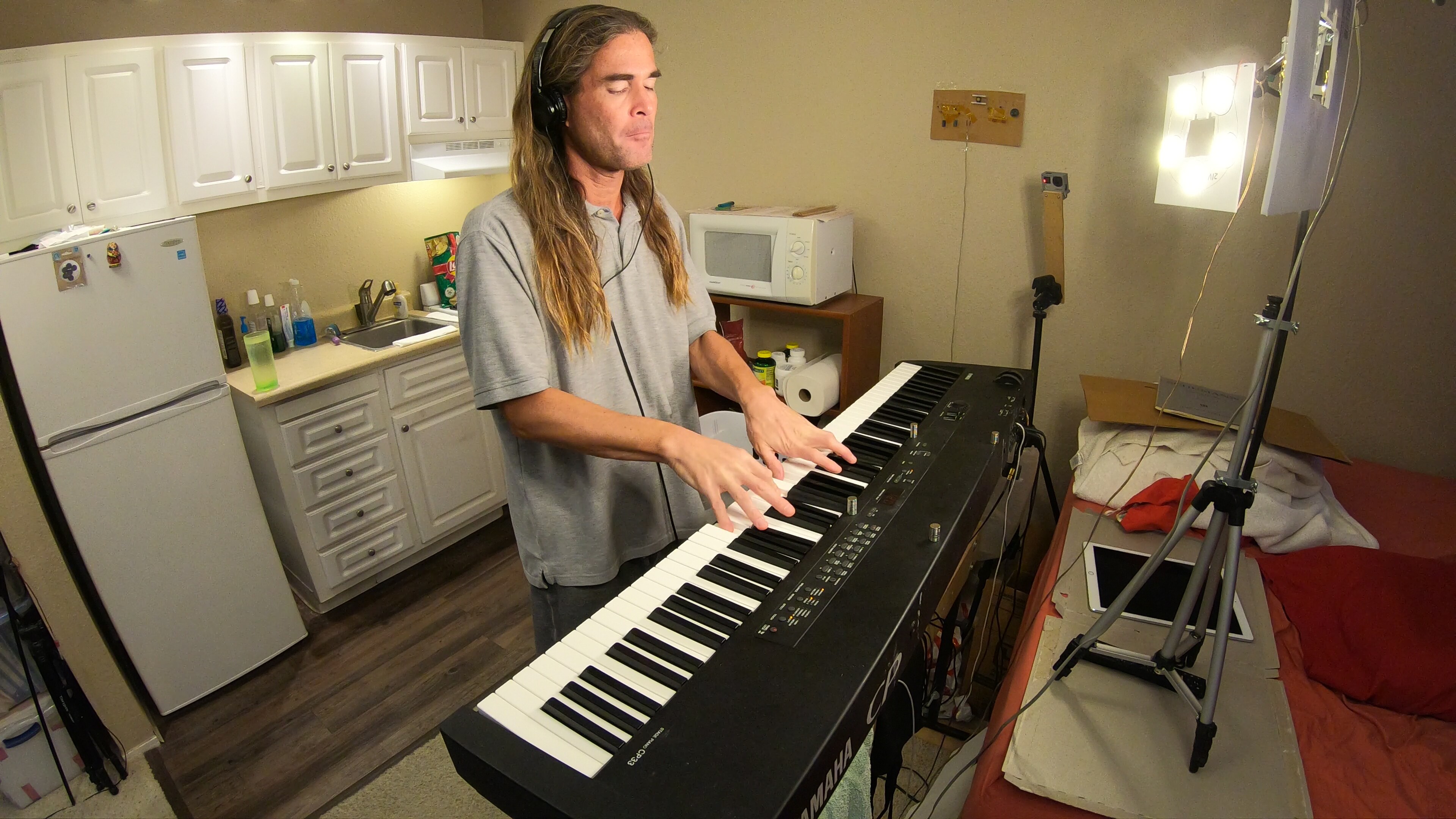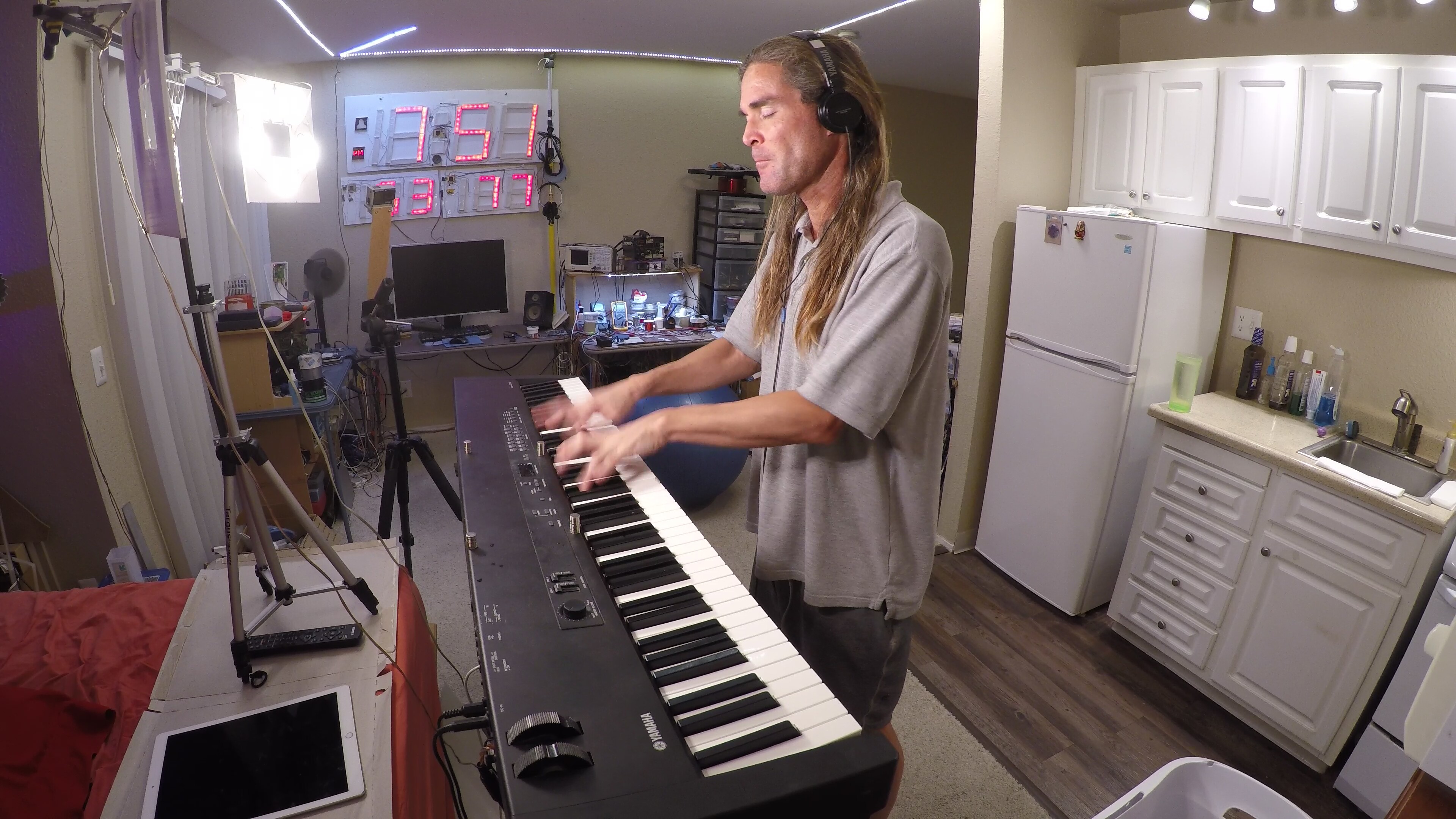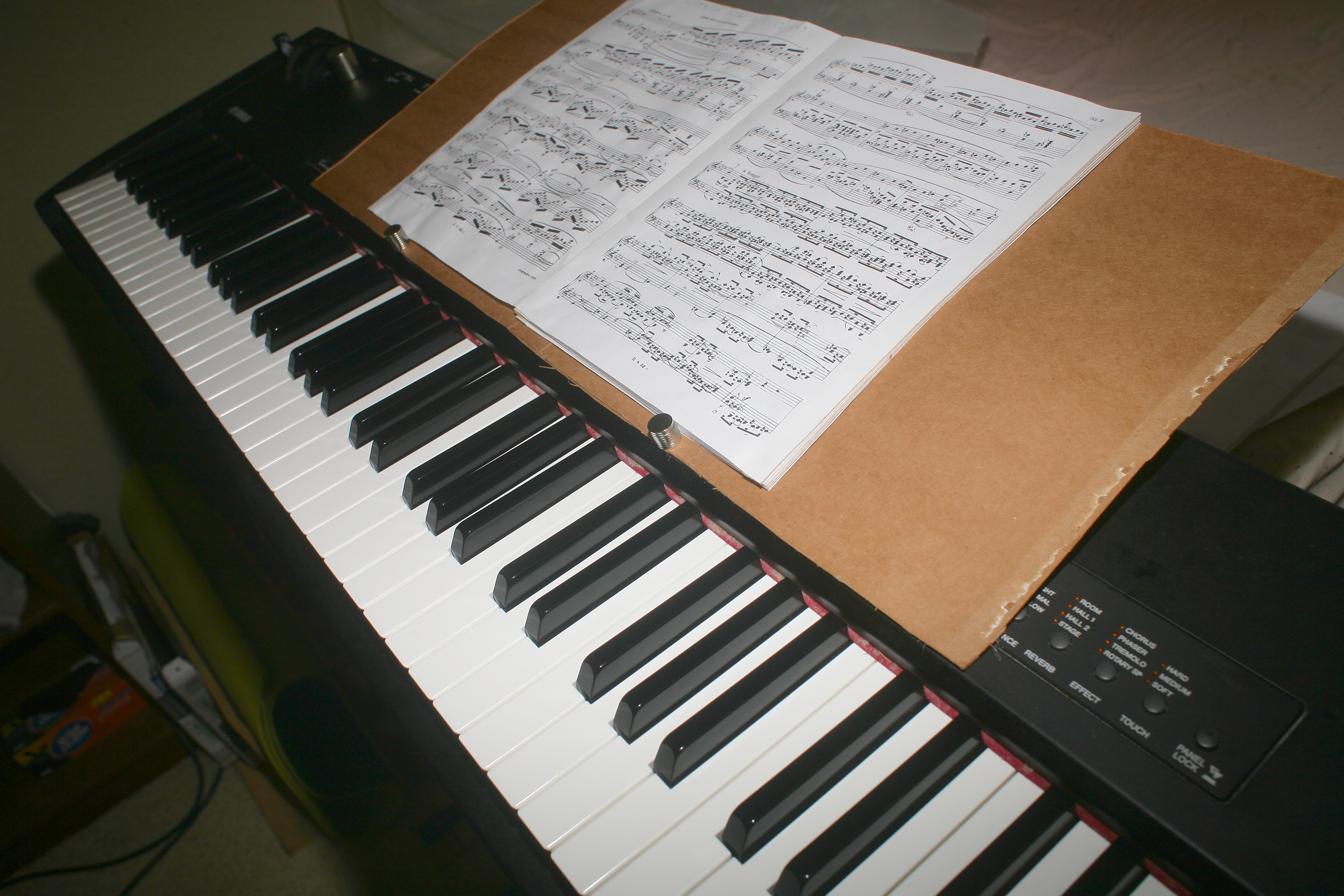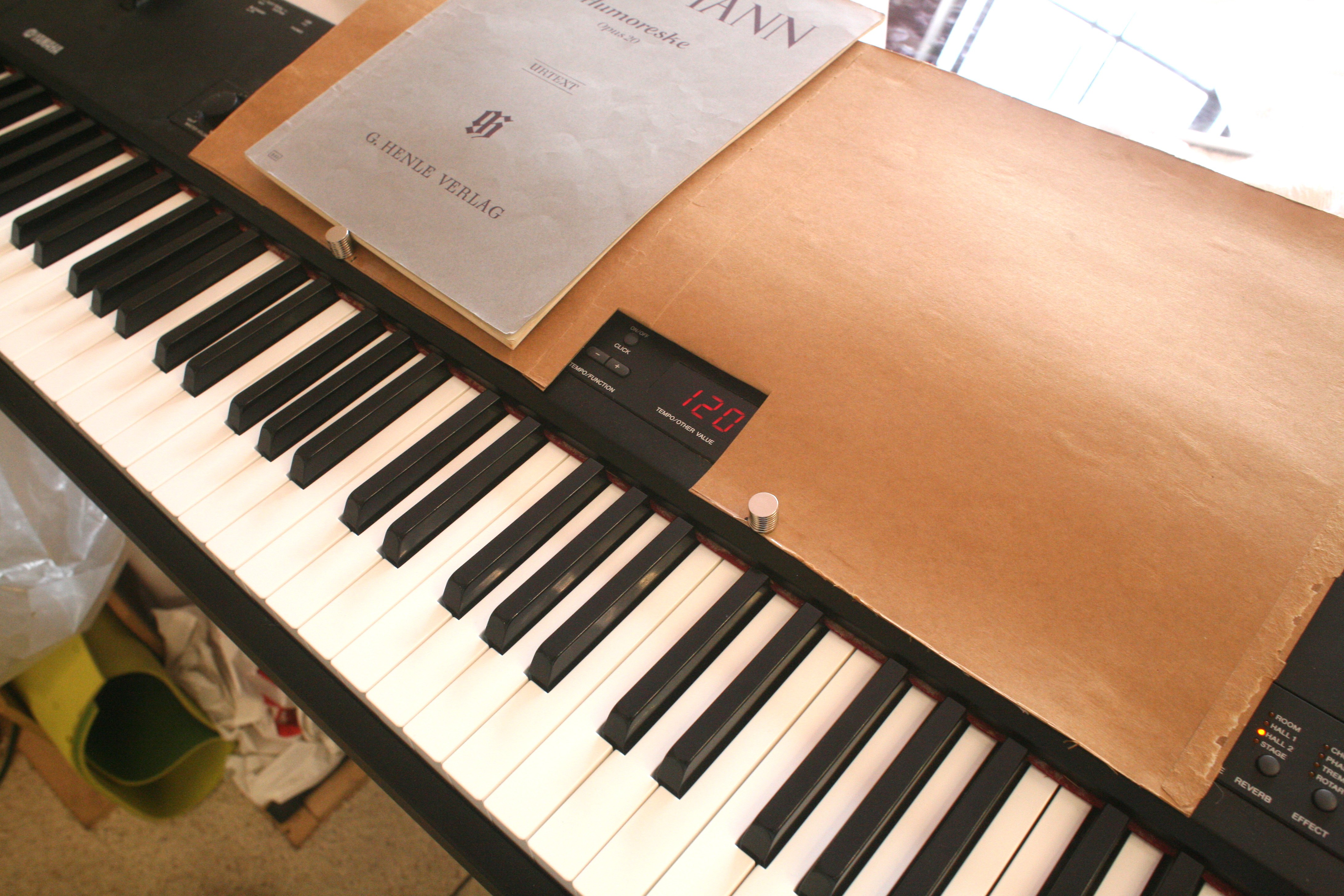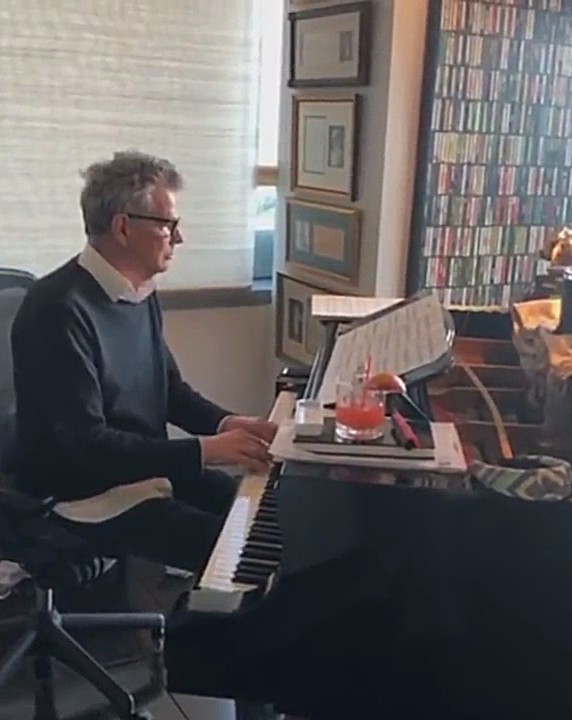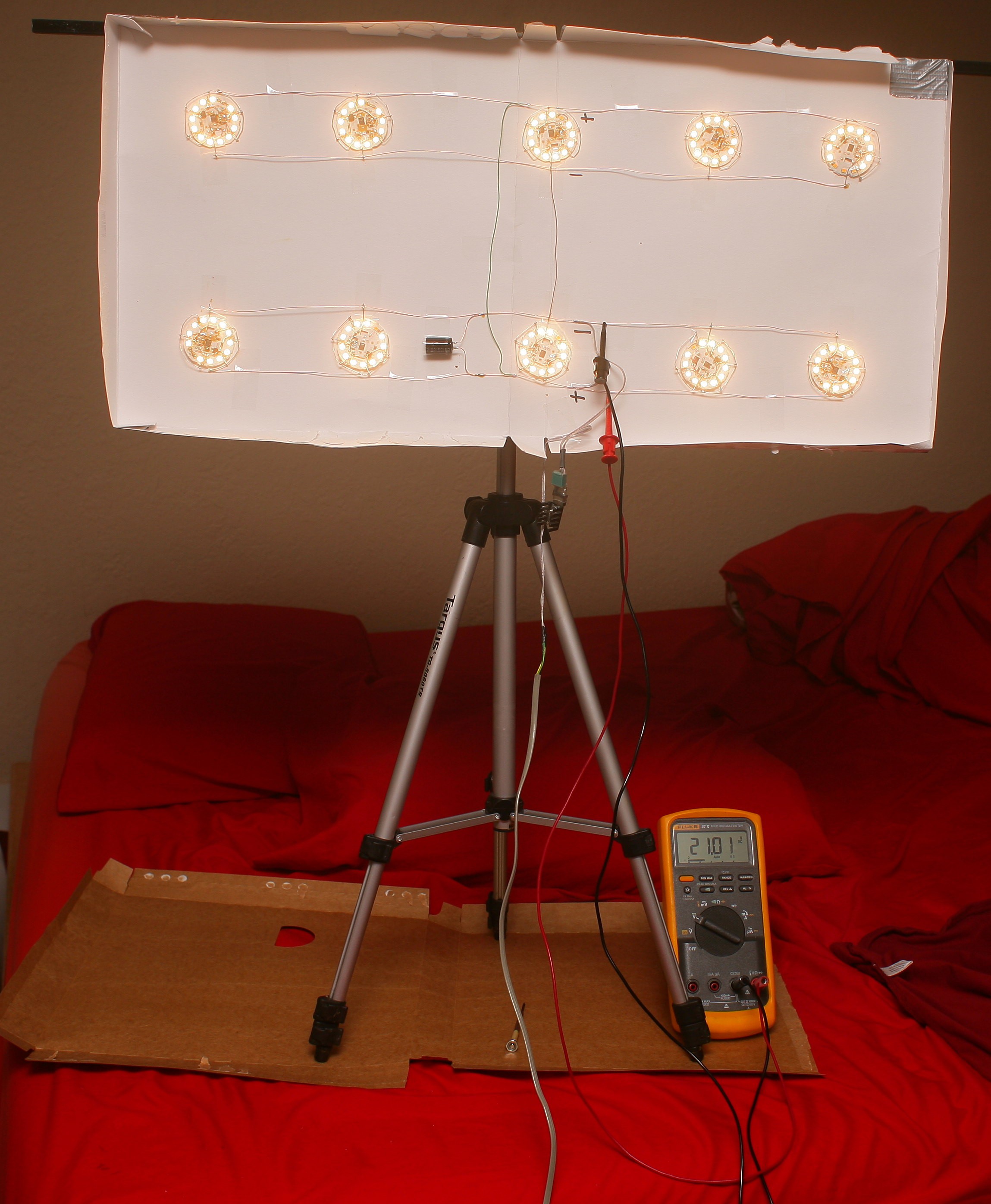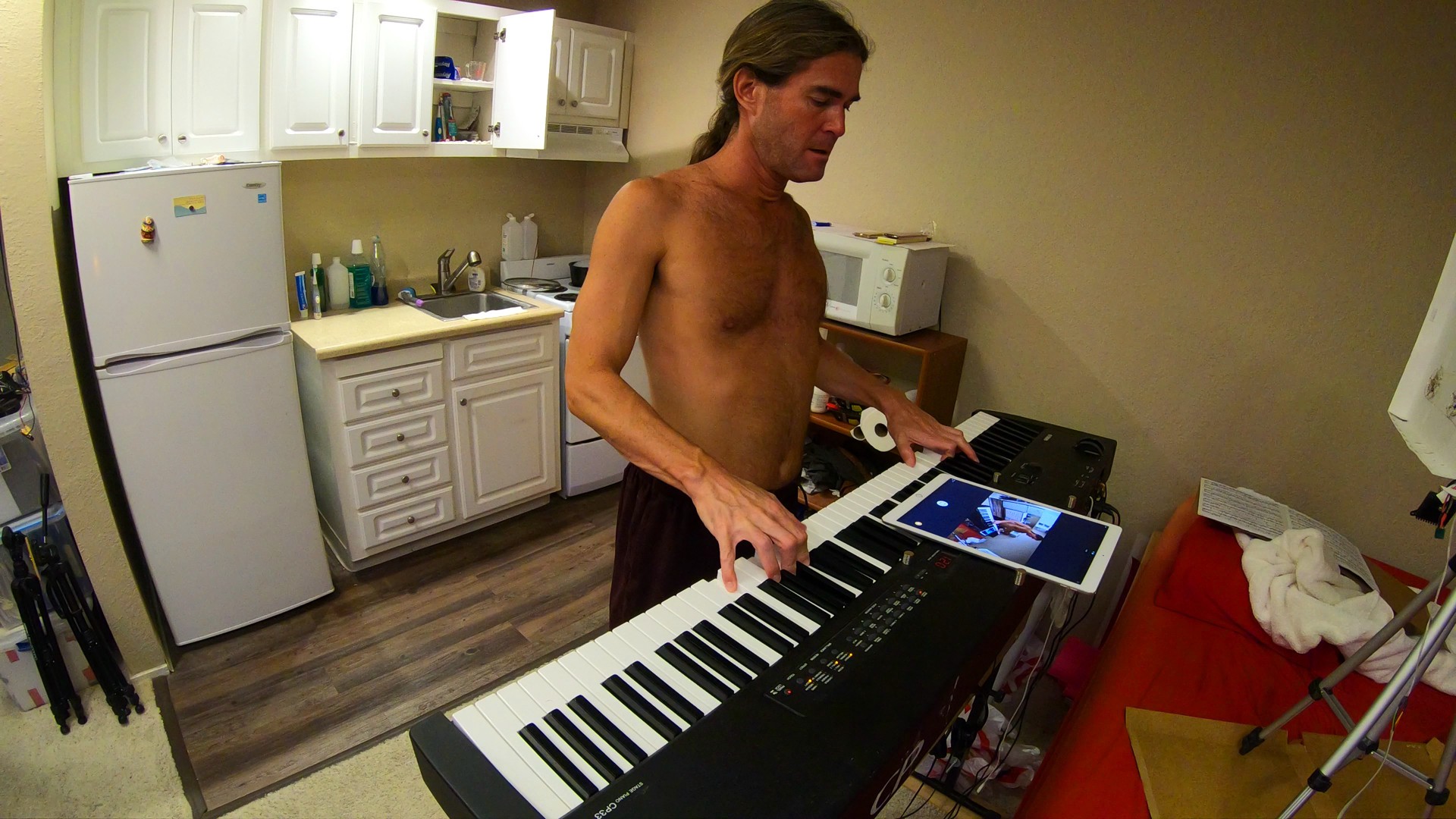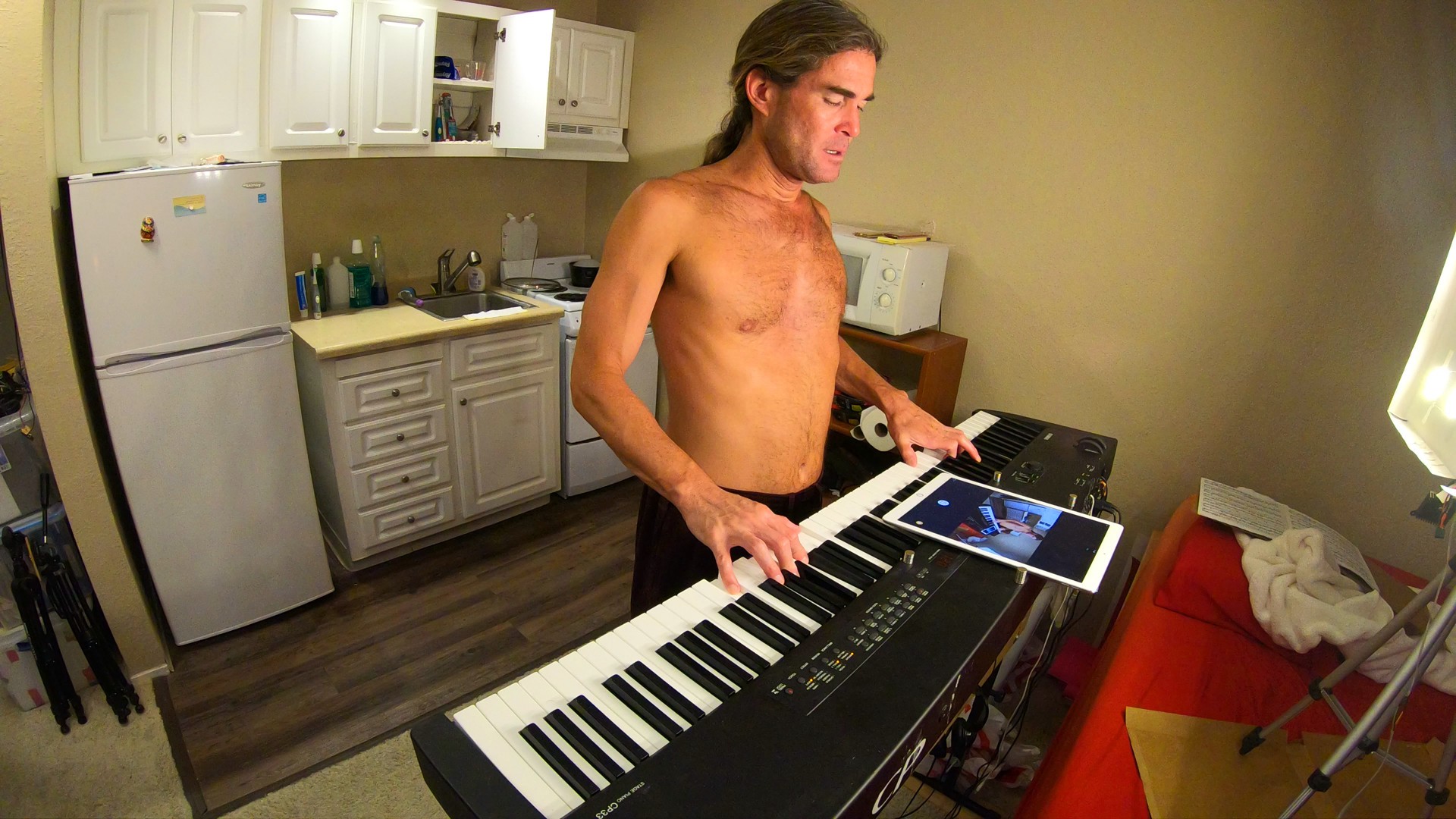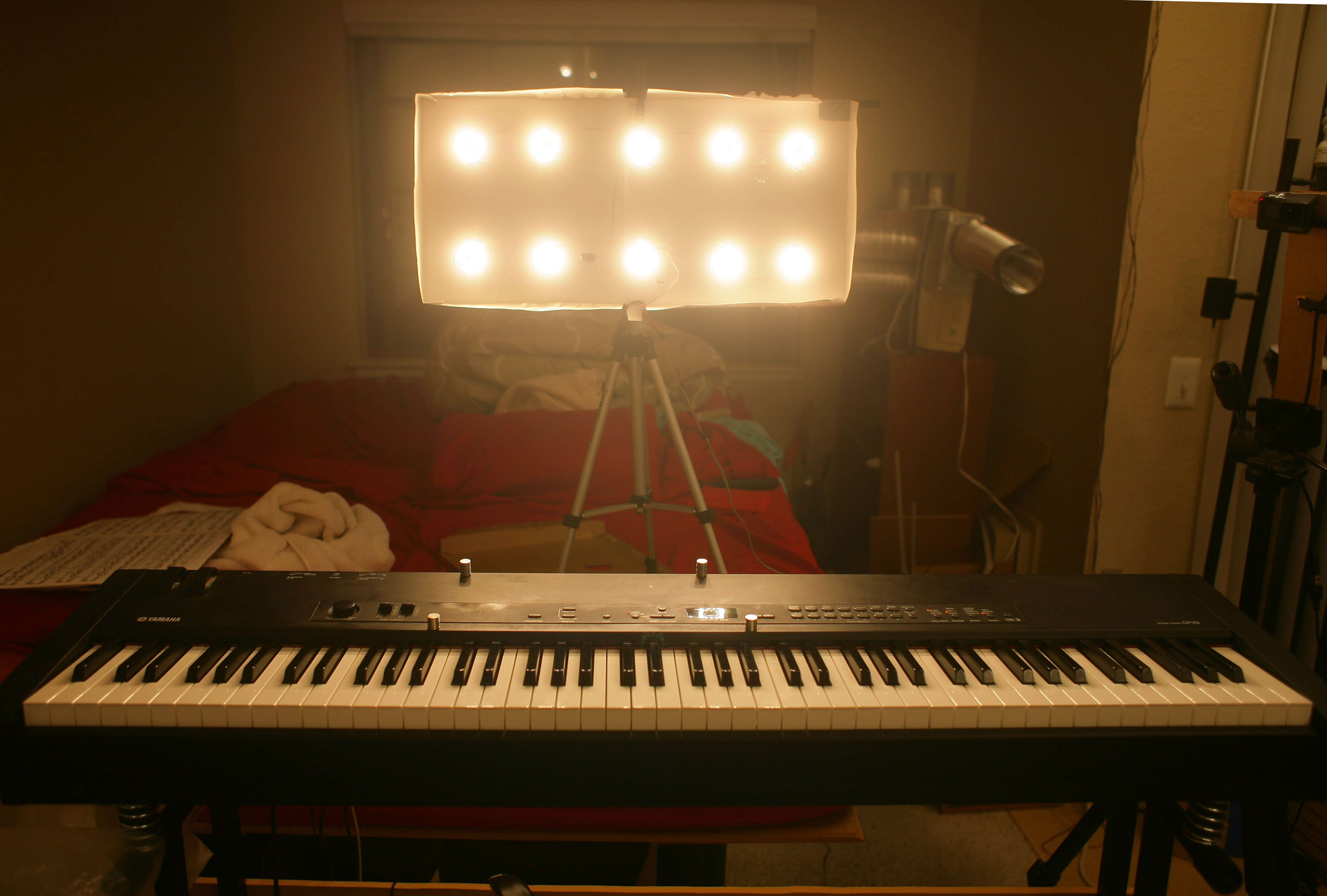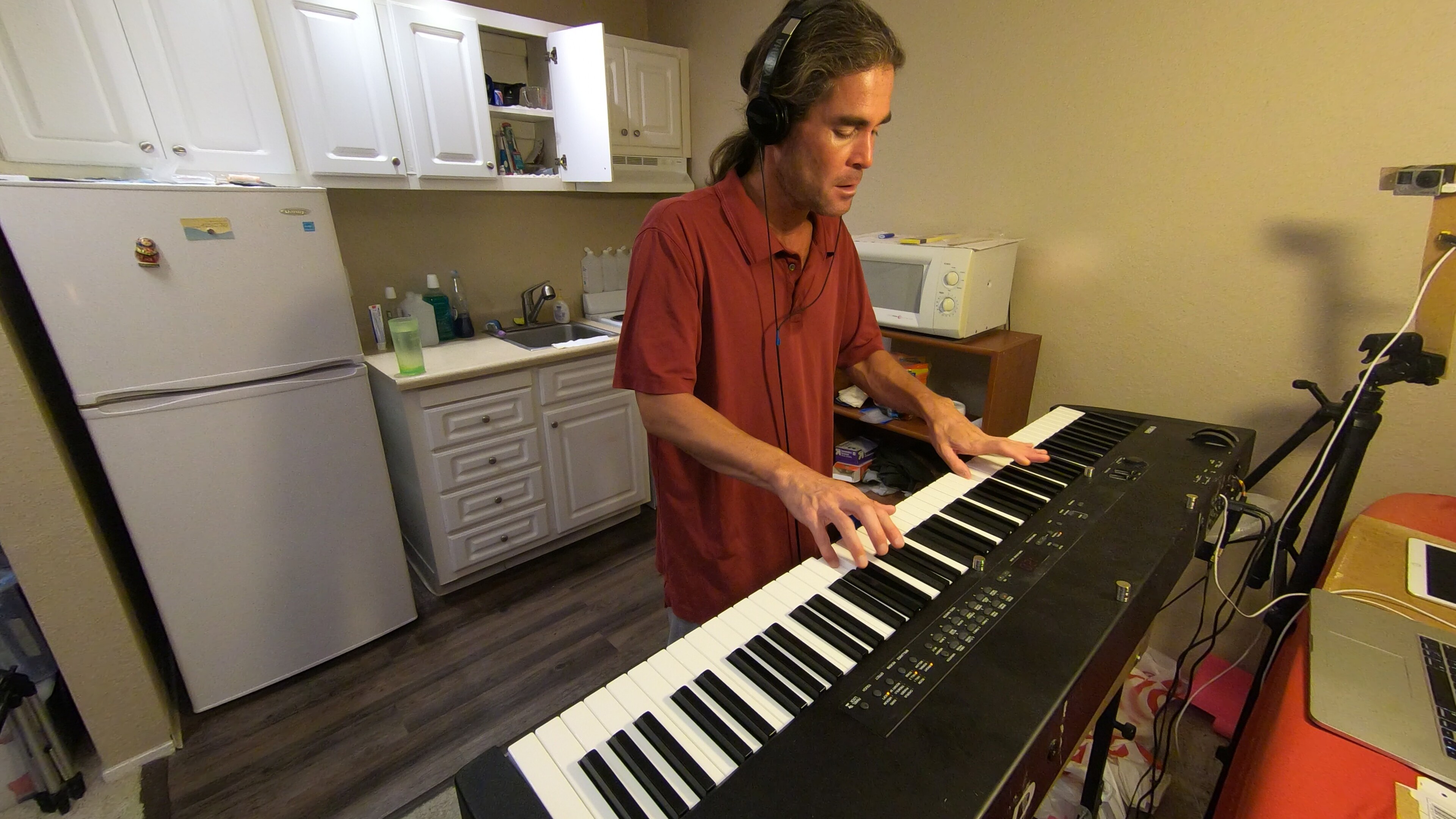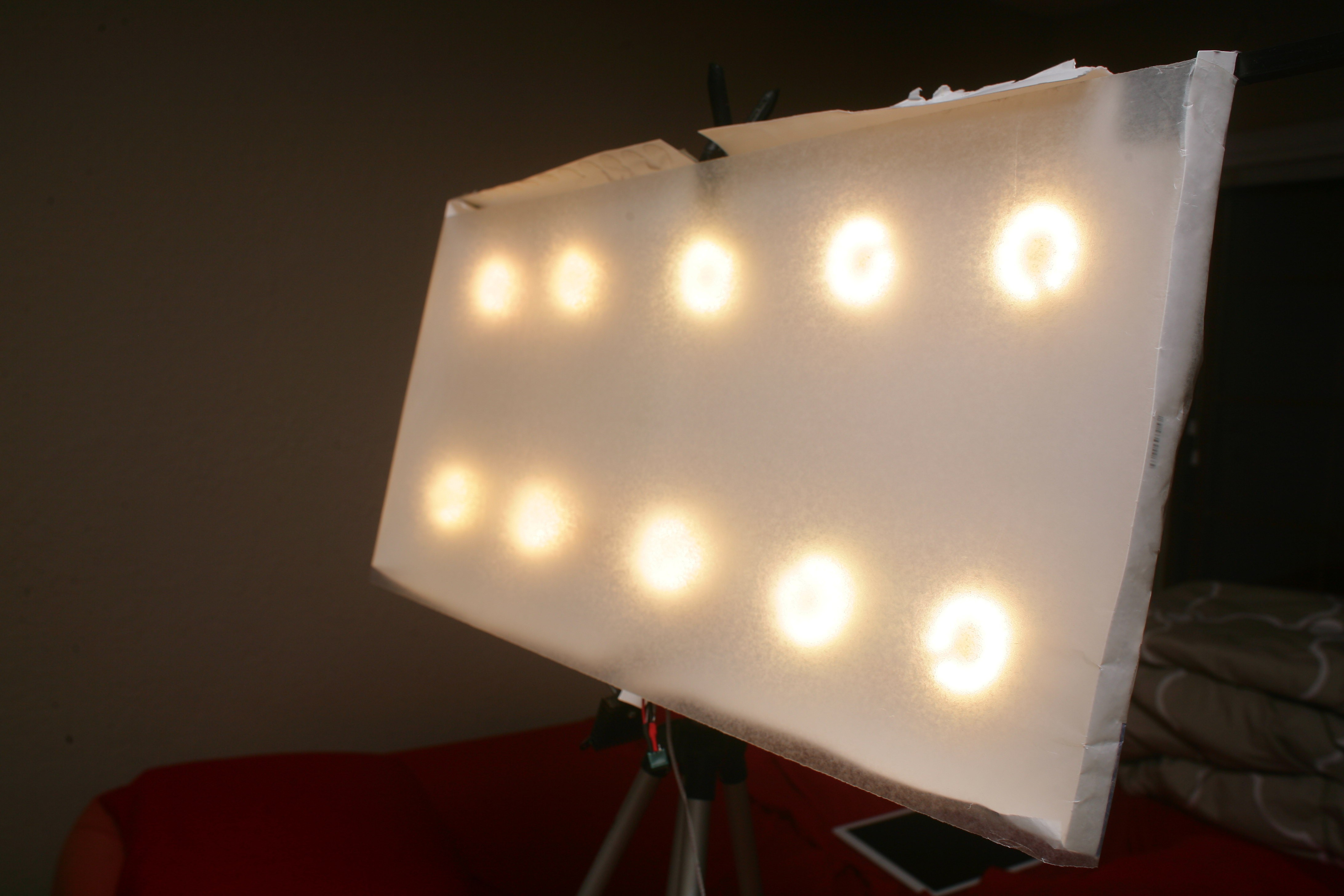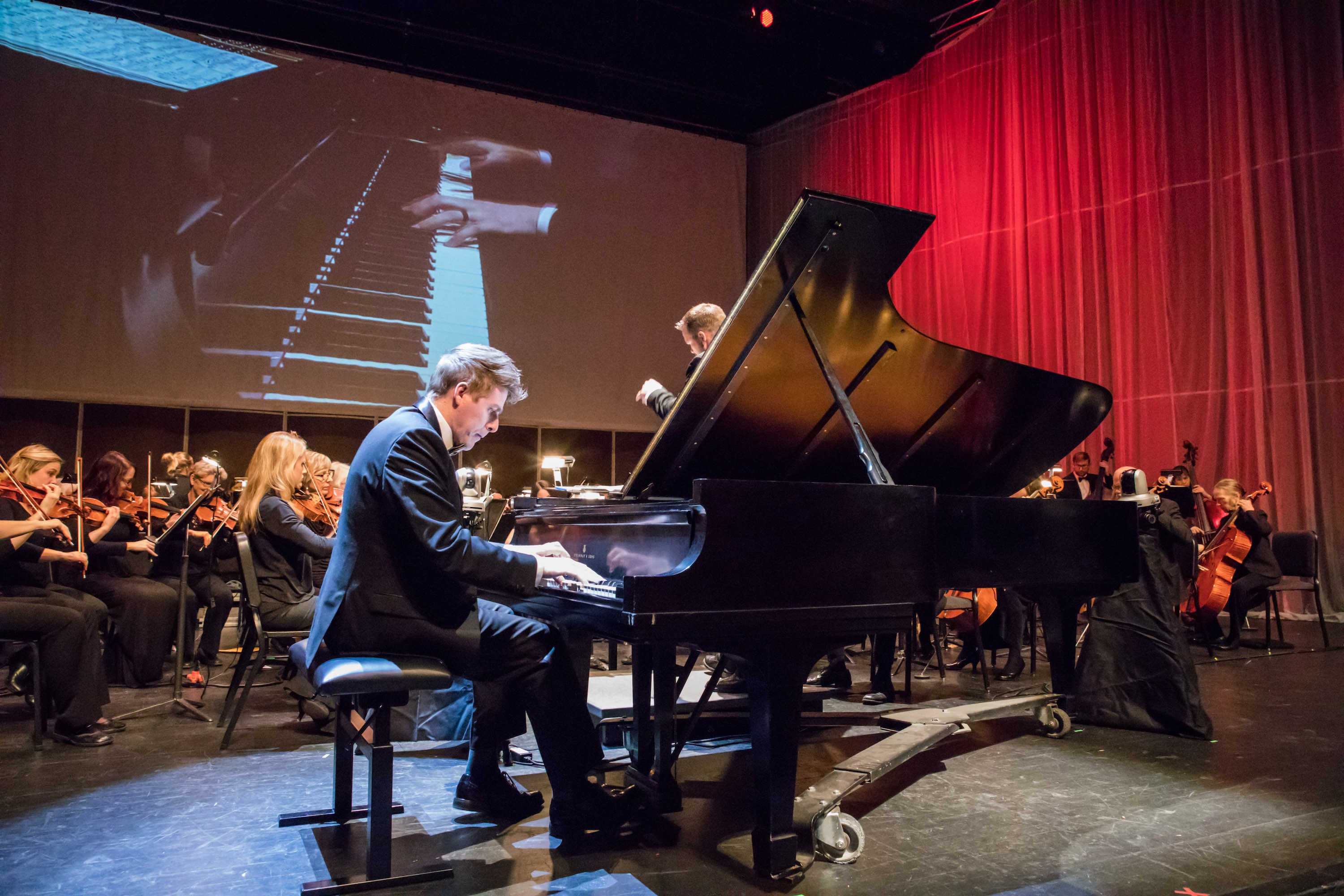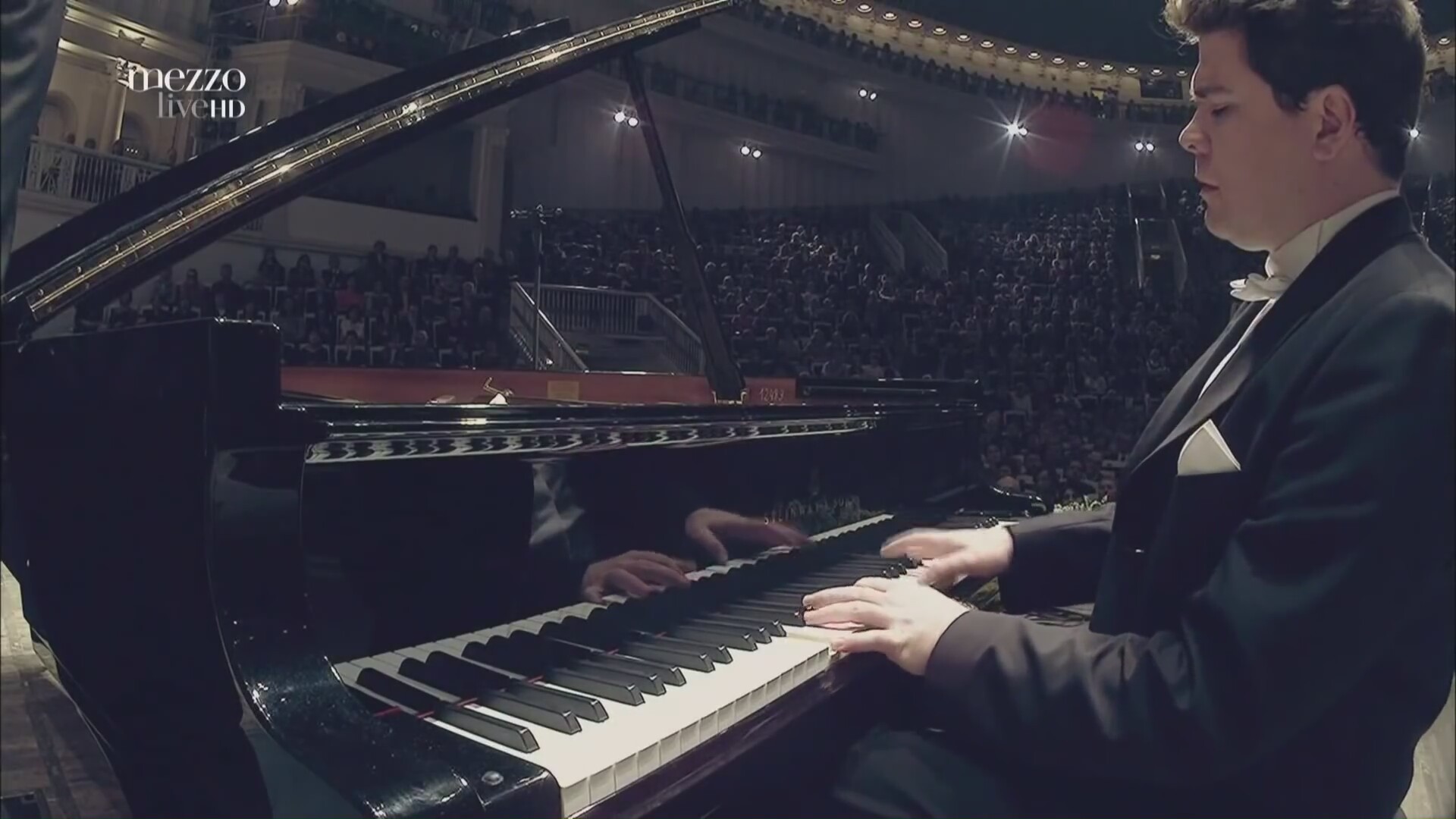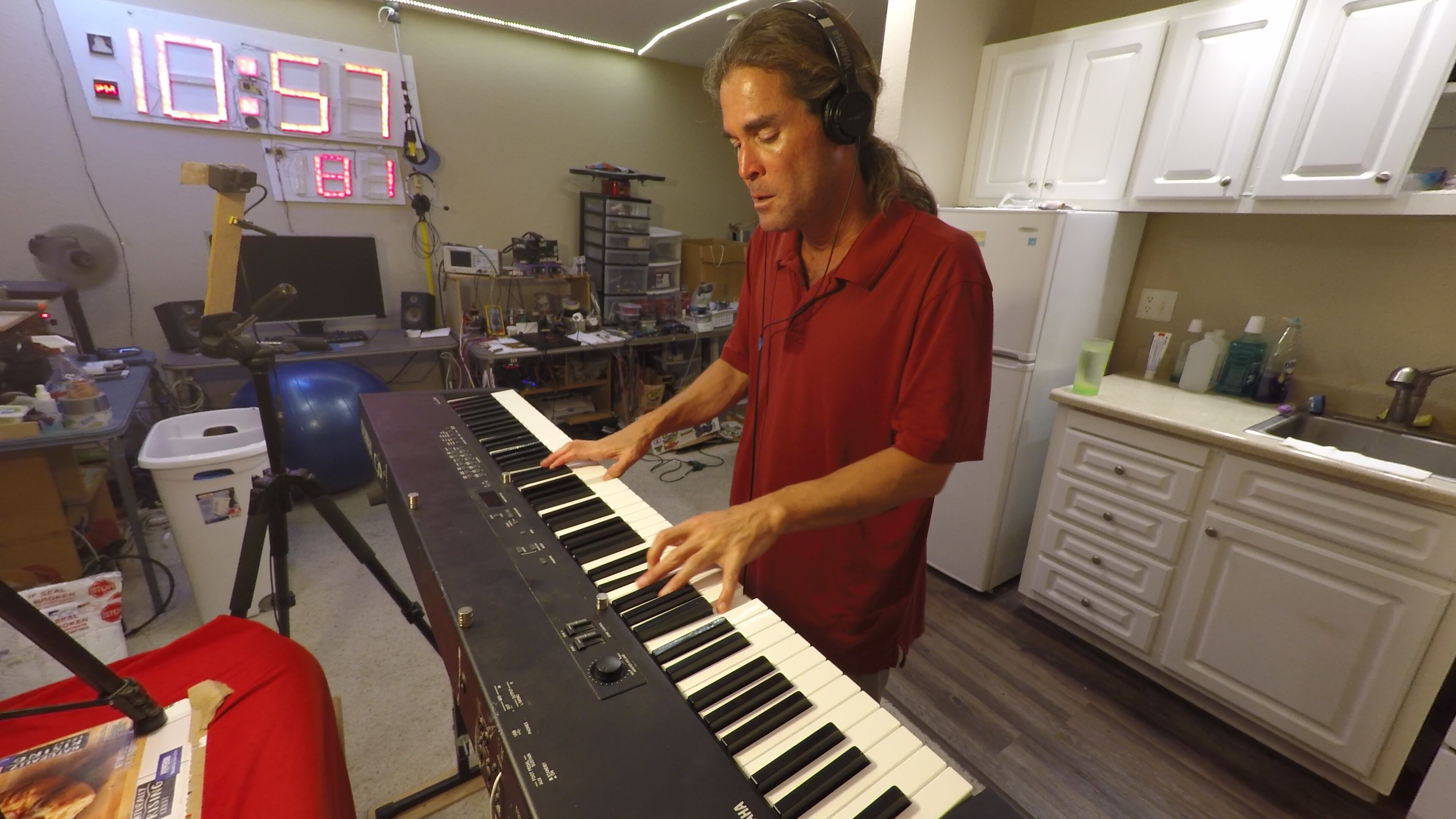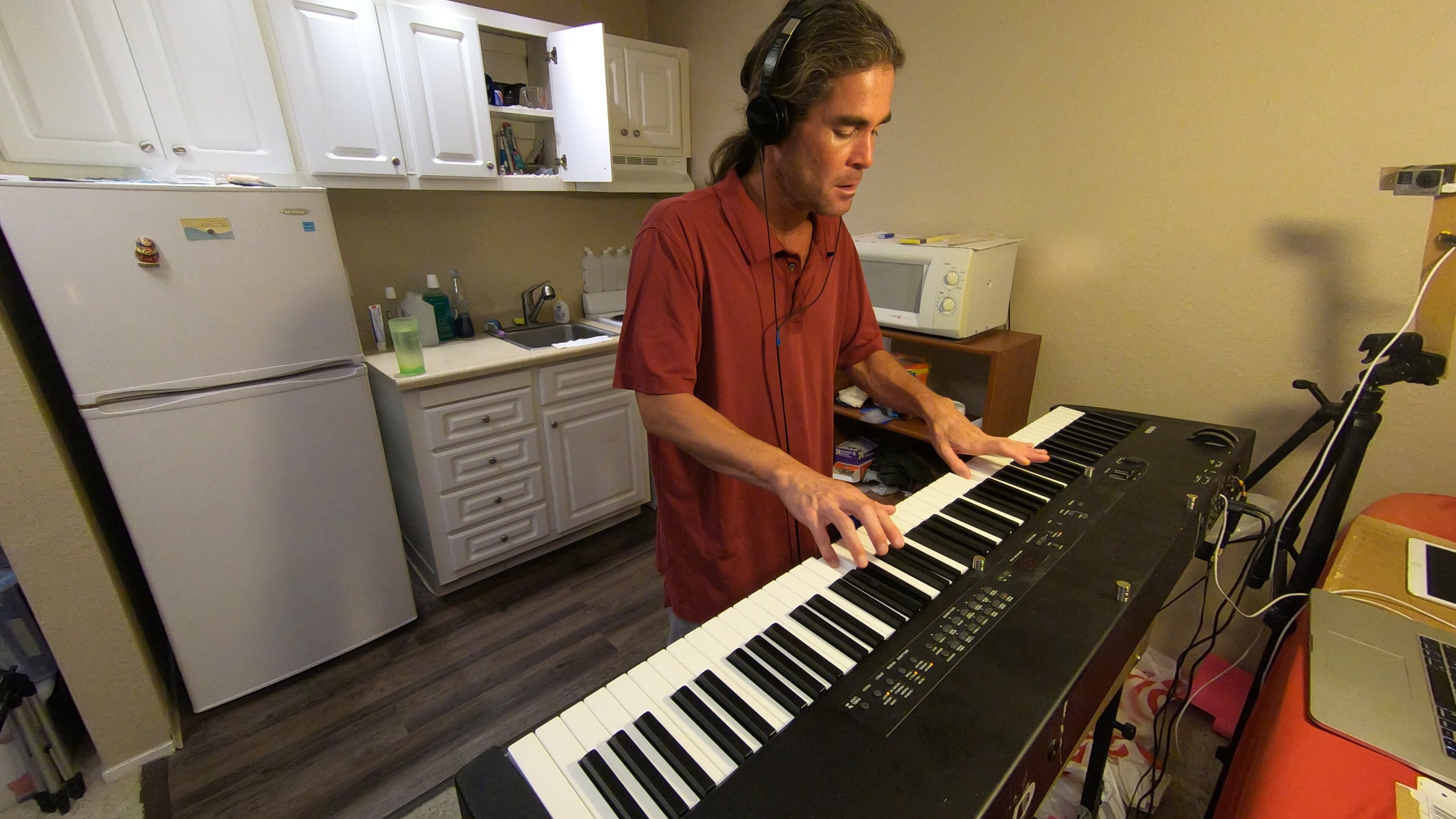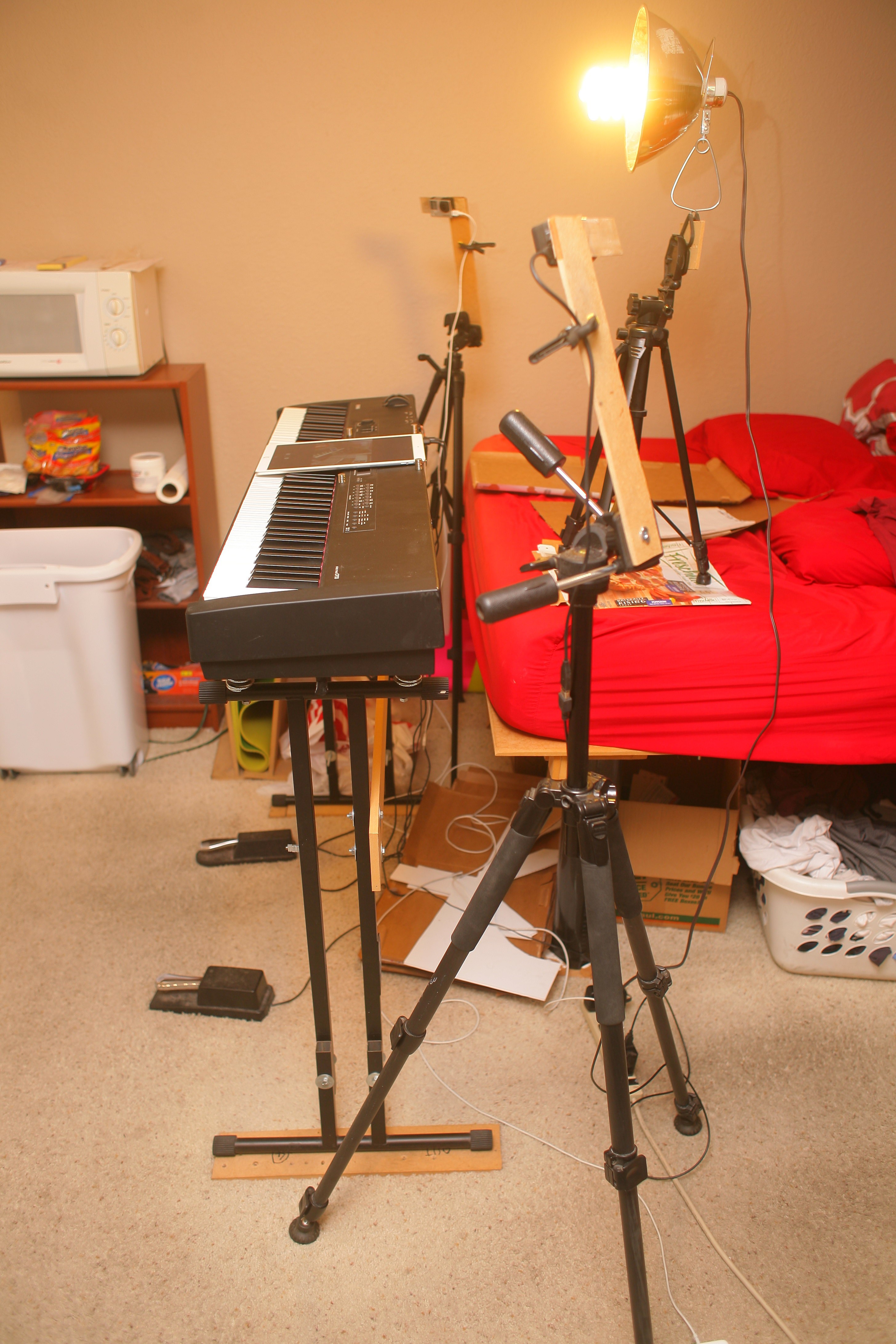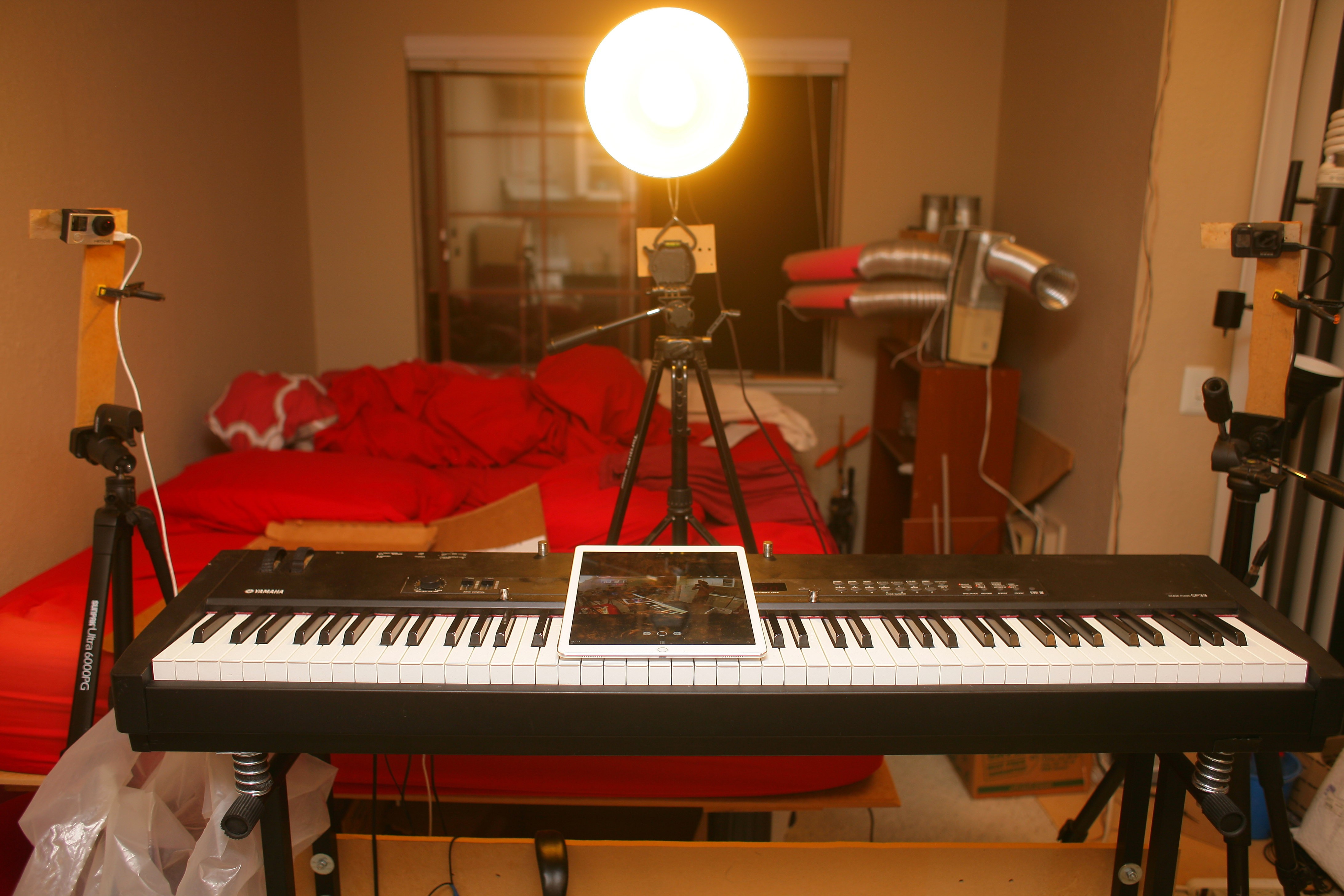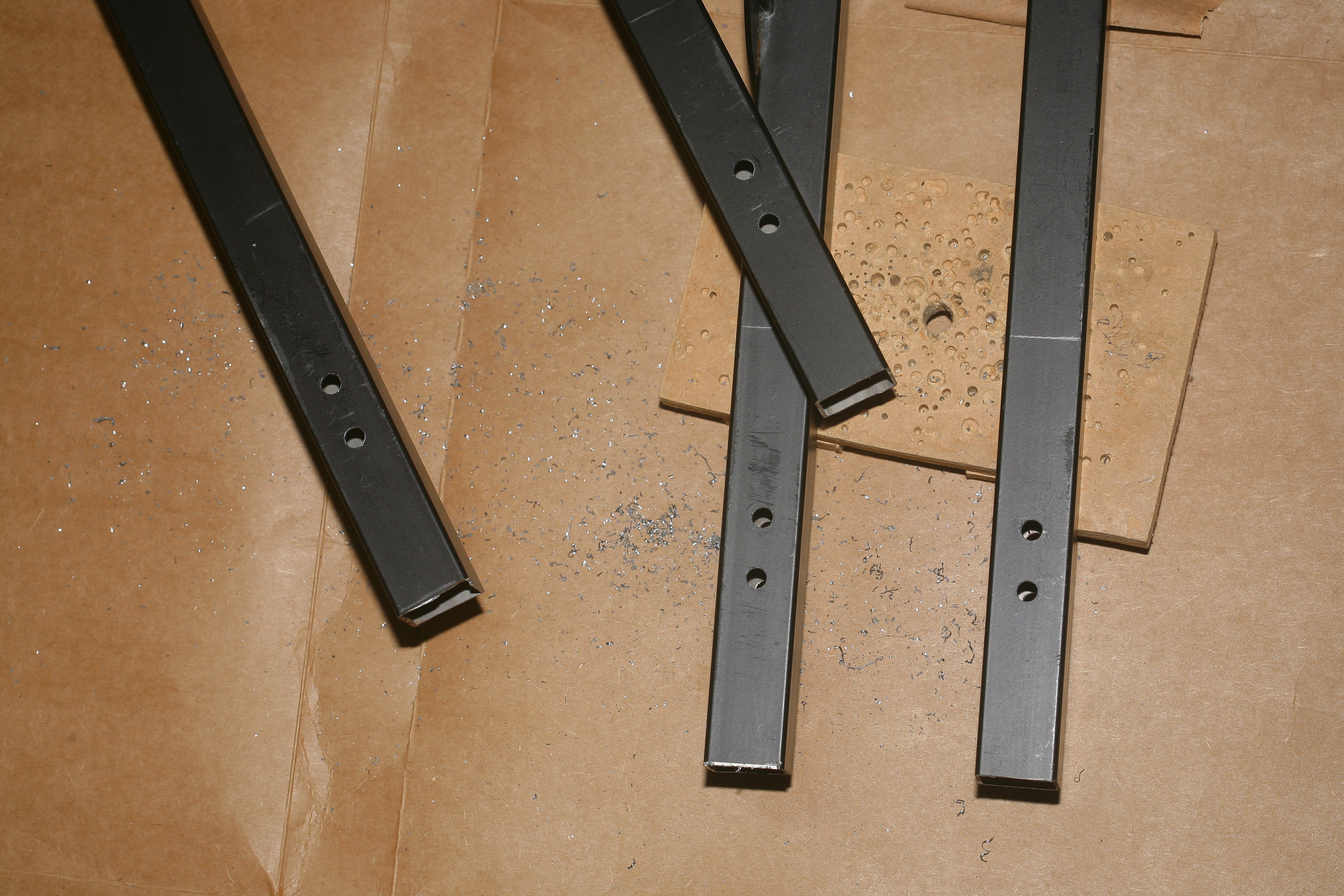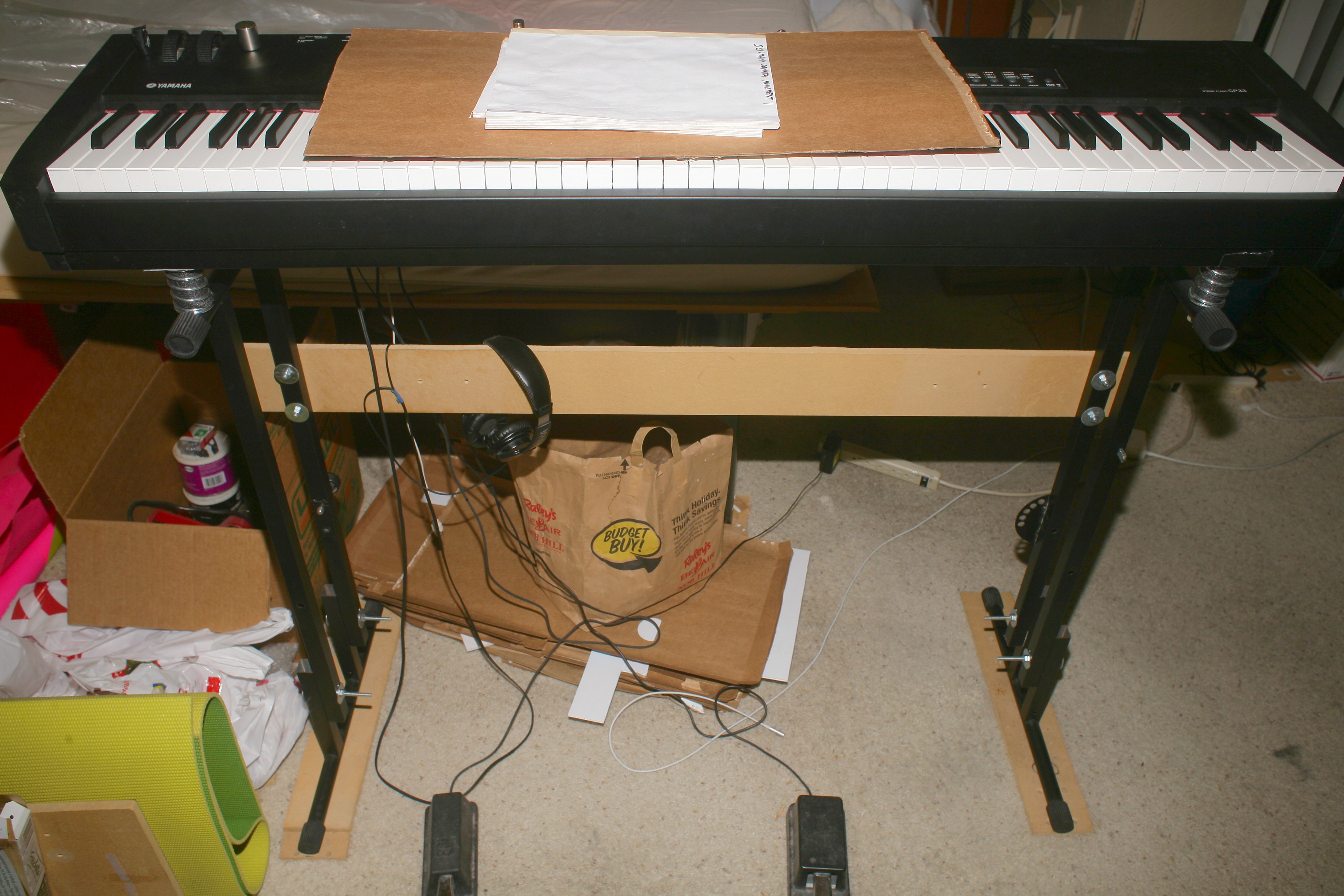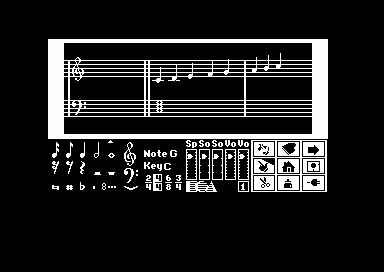-
It rises all the way
09/25/2022 at 20:52 • 0 comments![]()
![]()
Experience showed it was better to raise it all the way than lower it all the way to free up space. The original idea 20 years ago was to mount it on chains from the ceiling. The standing desk is about as close as it's ever going to get.
It was a big push, but enough wires were finally reconfigured to get it to go all the way up. There are still many unnecessary wires going to manes voltage that would be better off going to the ATX brick. The biggest win would be consolidating all the raspberry pis into 1 but a mini PC costs as much as a new instrument.
![]()
All the DC consumers were finally routed to the ATX power supply. It remanes to be seen if the 5V has enough juice to power all the cameras & confusers or if more 5V lines are needed.
-
Standing desk keyboard stand
09/19/2022 at 20:17 • 0 comments![]()
![]()
The 1st step in using standing desk innards as a keyboard stand took place. It's not portable, but a solid stand with motorized height is a game changer. It also costs 3x more than the Elton John stand. The cables aren't long enough for it to extend to full height.
![]()
![]()
Springs attached to adapter plates.
![]()
The only structurally sound way to mount adapter plates was on the inside.![]()
Confusers were mounted on scrap wood.
![]()
![]()
It got an IR remote upgrade with preset heights. Lack of space meant the piano had to go on the rear of it.
![]()
Ideally, the piano would go on the front, the rear would have a large LCD panel on an arm, & the control panel would be fully exposed again. There's not enough room for a table. The animal's legs have to go under the piano when sitting so to have enough room, the area under it has to be free from a table.
![]()
While it extends from a standing to a sitting position, there's not enough room for an animal's legs under it. The structure between the motors would have to be taken out or the keyboard would have to move to the front. The mane use of the height adjustment is now just freeing up space when it's not in use & dialing in a precise height.
![]()
![]()
It makes lions miss the original wooden stand. That worked on the 1st try, even though it didn't support standing.
-
Monitor dreams
05/04/2021 at 07:21 • 0 commentsThe arrival of cheap, portable 15" 1920x1080 monitors
https://www.amazon.com/dp/B0885RN8FQ
got lions revisiting the idea of a digital 2 page music display (https://hackaday.io/project/80525/log/156814-music-stand, https://hackaday.io/project/80525/log/147525-music-stand-for-an-electric-piano). For so many years, the choice in music displays has either been extremely small 7" tablets, extremely expensive 12" tablets, or massive TV's requiring a floor stand.
Reading music on a 12" ipad has proven difficult, over the years. It has to be cropped to be legible & turning a single page at a time is very slow.
$150 now buys what is basically a 15" tablet with lower resolution. Music would only be able to use a 1080x1562 window because of the aspect ratio. The densest music lions have worked on in recent times still seems pretty legible at 1080x1562.
You can get slightly over 1080 horizontal pixels by turning on individual RGB channels, you can stretch it to use all 1920 vertical pixels, & you can crop it. The stretched, uncropped version might actually be easier to read than 1080x1562.Even a single 15" monitor would be an improvement, but lions really want the childhood memory of seeing 2 full pages of music at a time, without actually storing thousands of square ft of paper. Most of the paper music could be scanned in, saving millions of dollars in square footage. Indeed, the cost of storing paper music is the mane justification for a $300 monitor system. The mane concern is how heavy 2 portable monitors would be.
1080x1562 version:
![]()
Stretched 1080x1920 version:
![]()
The remaneing needs would be a keyboard & touch pad for annotating.
$300 is still a lot of money for a lion. Even a $200 stand was too much. The stand is still an open ended problem so it's more like a $500 wishlist. Using 2 pedals while standing is hard.
-
Lighting methods
11/06/2020 at 20:34 • 0 comments![]()
![]()
![]()
![]()
![]()
There was once a ring light which didn't work. It would have to be aimed separately from the camera because of the wide angle lens. This was deemed impractical.
![]()
![]()
![]()
![]()
Then came a return of the light panel in carbon fiber form. This would allow more sideways direction.
![]()
![]()
![]()
![]()
![]()
![]()
Manely back to the way it was, but slightly easier on the eyes to have them on the sides. The heat sinks for the voltage regulators form horizontal supports.
-
Outboard front panel, standing up
04/05/2020 at 19:55 • 0 commentsThe ideal place for the music is right on top of the front panel,
![]()
but this makes it very hard to access the front panel for using the metronome or changing instruments. Lions never change instruments, but need the metronome. 1 idea was to cut some holes to make the music stand easy to flip up. This would expose the metronome, but not the whole panel. Everything but the metronome can be controlled through USB.
After cutting a hole for the metronome, there was still the problem of moving the music out of the way to access the metronome, but it was bearable. It still doesn't have persistent settings, on the CP33. The whole matter is pointing to a breakout board with another 7 segment display & set of buttons.![]()
Another problem lions have encountered is using 2 pedals while standing up. This has never been perfected. There might be a degradation in tone quality from not using the left pedal. The CP33 doesn't have a real una corda sound, but it does increase the dynamic range.
![]()
Watching David Foster playing his late model Yamaha CF-III in his $600 office chair reminded lions of what a seated position could be. Lowering the keyboard would require buying a commercial stand.
-
The lighting panel
07/05/2019 at 21:54 • 0 comments![]()
The new panel used 10 x 8W LED lightbulbs converted to 21V. The current ones use 10.5V per LED chip. The lion kingdom continues looking for easier sources of LED chips, but converting lightbulbs remanes the cheapest method.
It's a shame to put 10 x 8W LED lightbulbs in a panel that only uses 15W. They have to run well below rated power because of the loss of the heat sinks & the loss of 1 LED per light. Leaving them in the original lightbulbs would require a much more massive panel with manes voltage & expensive edison sockets. Adding heat sinks to replace the lightbulbs would also make it heavy. The only advantage to a 15W panel instead of 2 lightbulbs is the wider lighting area.
A 10 x 8W panel with the original lightbulbs would cost $70 but put out the equivalent of 600W. The highest lions ever had in the same area was a 200W equivalent lightbulb.
![]()
![]()
![]()
The meager light panel emerging from this conversion still gives impressive results.
![]()
A 60W CFL of past videos had to be farther away to reduce glare, was less directional & created more shadows.
![]()
The lion was blinded by bare LEDs, so a diffuser was installed.
-
Camera placement for piano recordings
06/30/2019 at 08:10 • 0 commentsThe lion kingdom has used the traditional narrow depth of field DSLRs like on Guutube, telephoto lenses, normal lenses, cheap camcorders, & action cams. The best cameras for piano recordings have been fisheye action cams. Even better are dual action cams for hiding each edit.
![]()
This shot of Josh Wright showed the power of a wide angle lens. There's a lot more going on than in the traditional telephoto shot.
![]()
The first action cam shot lions ever saw in a piano recording was this shot of Denis Matsuev. They didn't defish it.
The standing position was challenging because the tripods don't go high enough to get eye level shots. The gopros needed some custom extensions. Only then, it became clear that the best position was close to the keyboard, negating the tripod extensions.
The best format is 4k 16:9. Then defish in software. The keyboard should be diagonal. The defishing process widens the keyboard, making the paw movements bigger.
Lighting is still unsolved. It might require investing in proper LED panels instead of the CFLs of the last 10 years.
![]()
The gopro 4 was useless for landscape photos because it's front focused. It's better for closeups like this.
![]()
The gopro 7 has a wider depth of field.
![]()
![]()
-
Another height adjustment, another hour.
05/27/2019 at 00:27 • 0 comments![]()
After finally settling on an increase of 3/4", the 8 holes were drilled.
![]()
That's as tall as it can go without a major investment in a new stand. The stand height was now 35" + 2.25" of spring height.
![]()
Also visible is the latest in music stand technology, 4 magnets non destructively bolting down a sheet of cardboard. The panel is inaccessible. Former attempts to make a stand with duct tape left adhesive everywhere. It was finally removed with much acetone & erosion of the plastic parts. Another iteration would involve a hinge mechanism to access the panel.
After a few months, this height proved acceptable. It made the sound less harsh.
-
Music monitor ideas
12/22/2018 at 22:15 • 0 commentsThe 10 year old 30" monitor would be as good a music stand as a new 4k monitor. Bolting such a heavy monitor on the keyboard is made impossible by the use of springs to dampen it out & the top heavy standing keyboard stand. The lion kingdom has nearly settled on the top heavy, standing keyboard stand. All LCD's are still made of solid glass. Even dual ipads would unbalance it.
The largest light weight display is the $700 13" diagonal Sony DPT-RP1. Far cheaper than an ipad, but useless for any games. It's only use is reading PDF's.
Instead of a higher resolution display, there's also simplifying the music for a lower resolution display.
![]()
320x100 was once plenty of resolution for a line of music. Forget about cut & paste. The lion kingdom actually did painstakingly copy a short Dan Coates arrangement to Music Construction Set. With today's knowledge, it would have been faster just to write a better program. The C64's graphics features would have had an easy time supporting this kind of program.
Being able to notate music is a big wish for the music screen. Rather than combining a drag & drop interface & MIDI, it would almost be easier to use a keyboard & MIDI. Modern touch screens are more like keyboards than mouse interfaces.
Ultimate practice room
Convert the X stand included with most keyboards into a table stand with isolation from the floor.
 lion mclionhead
lion mclionhead